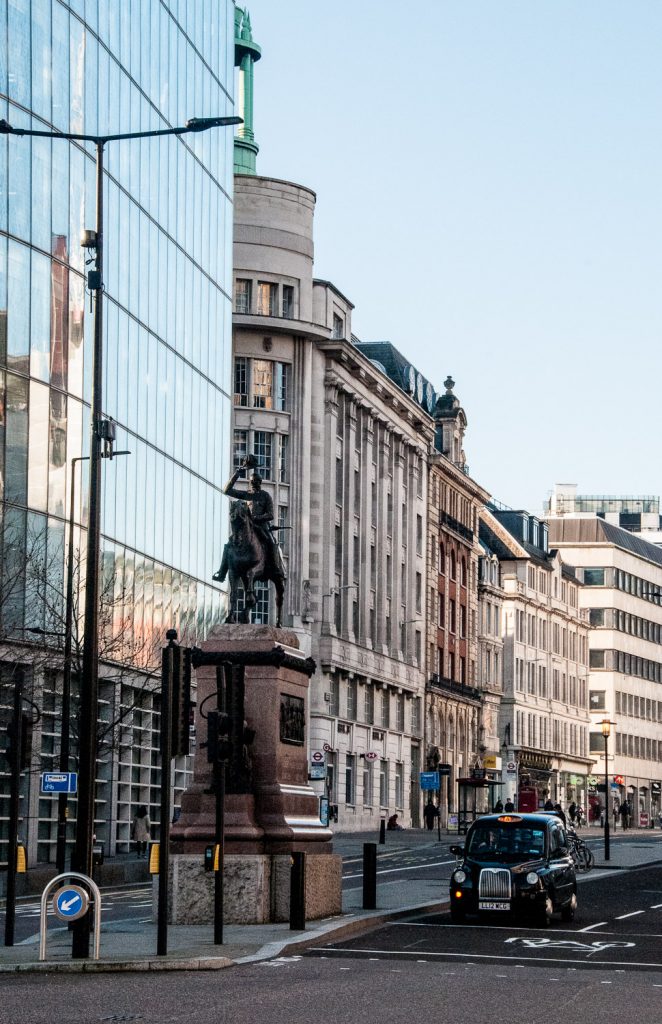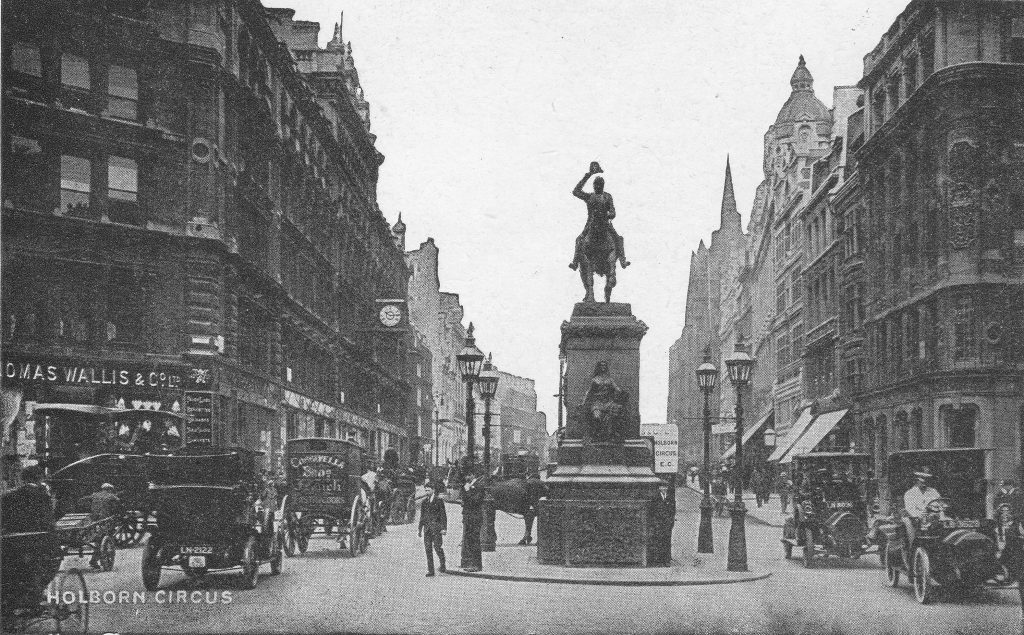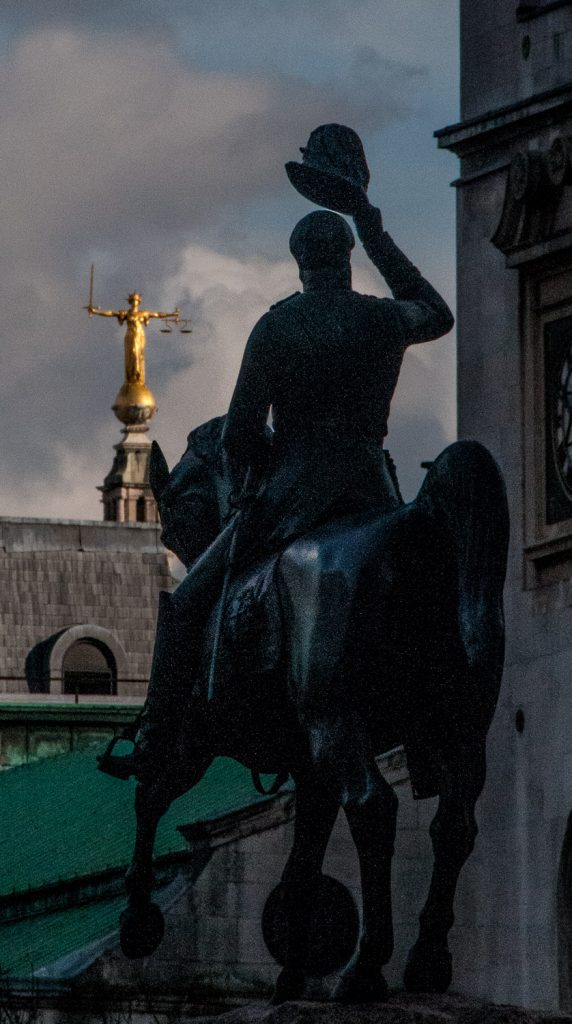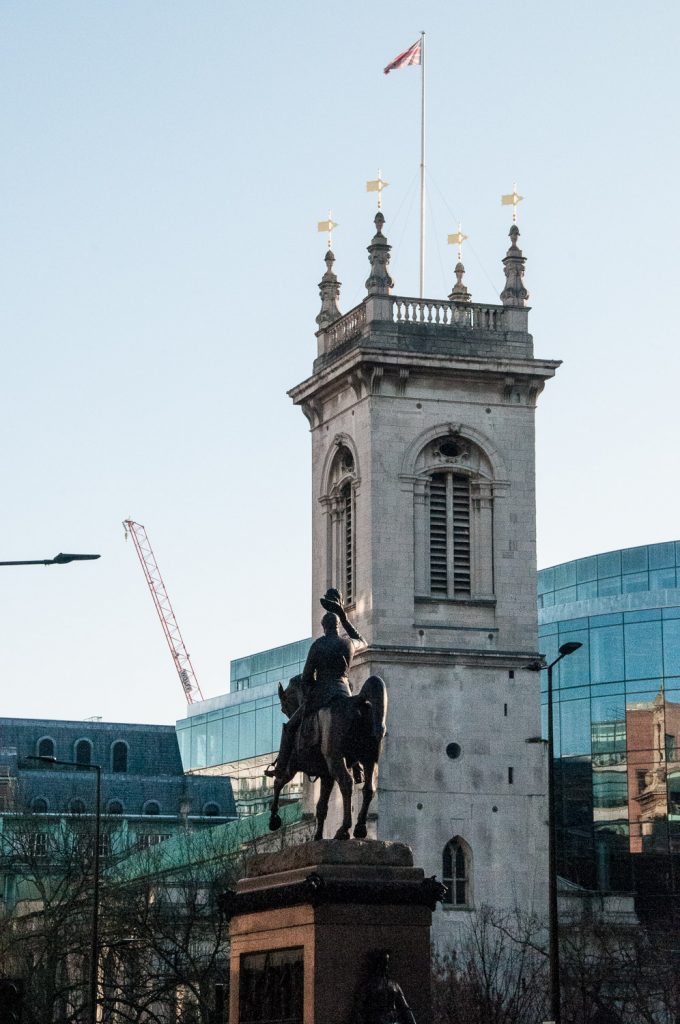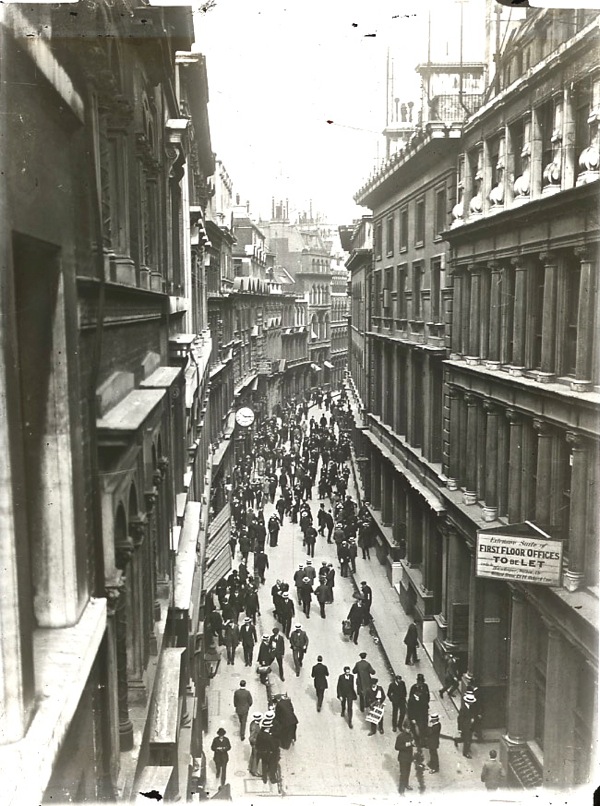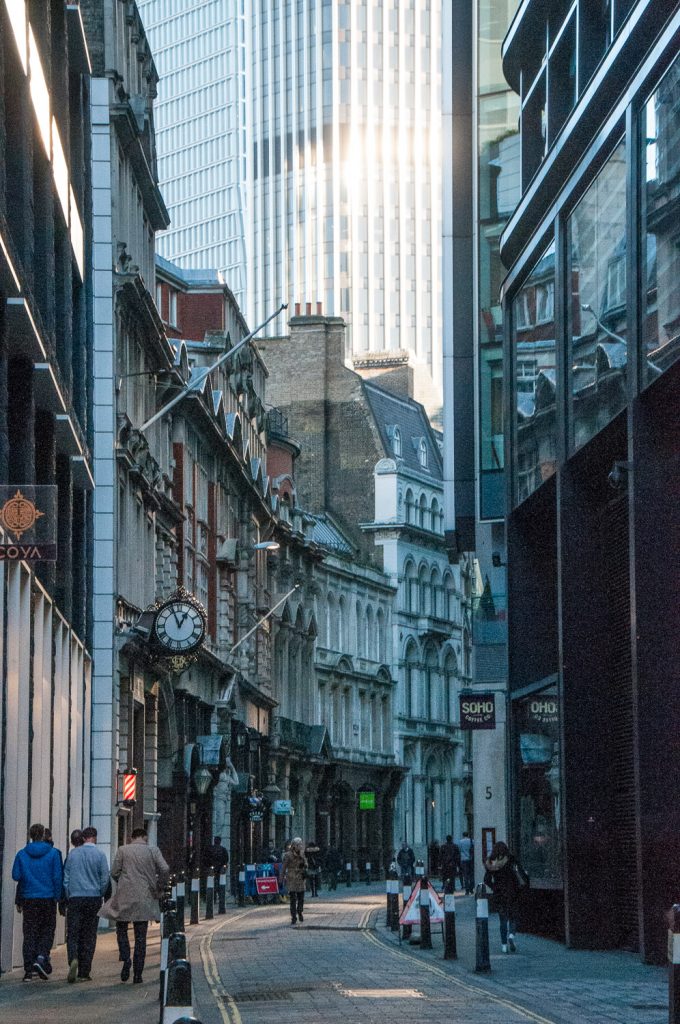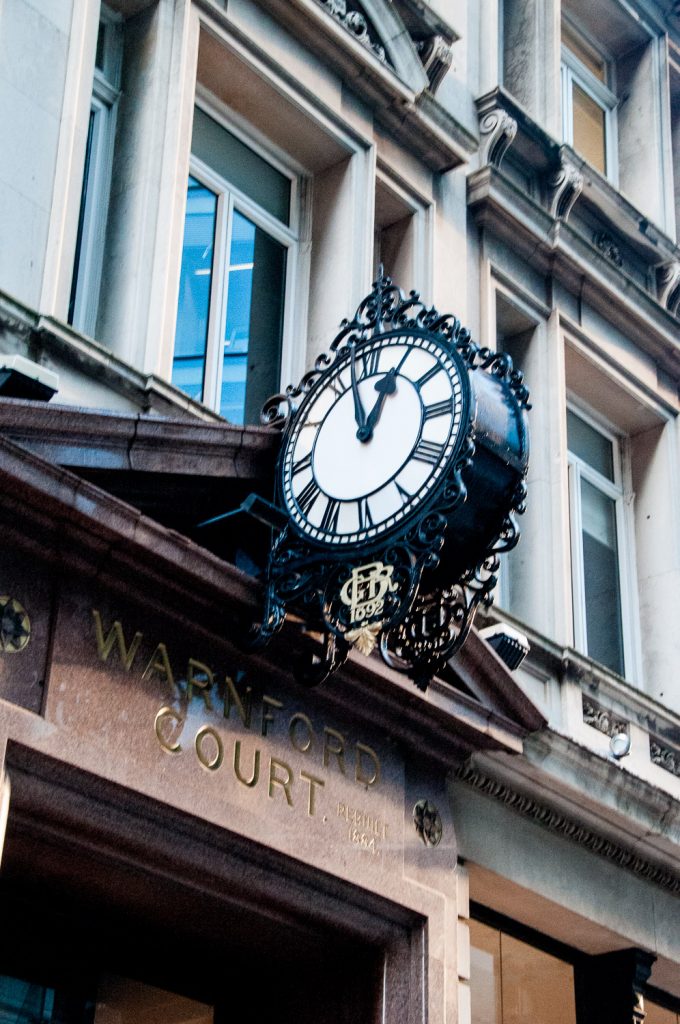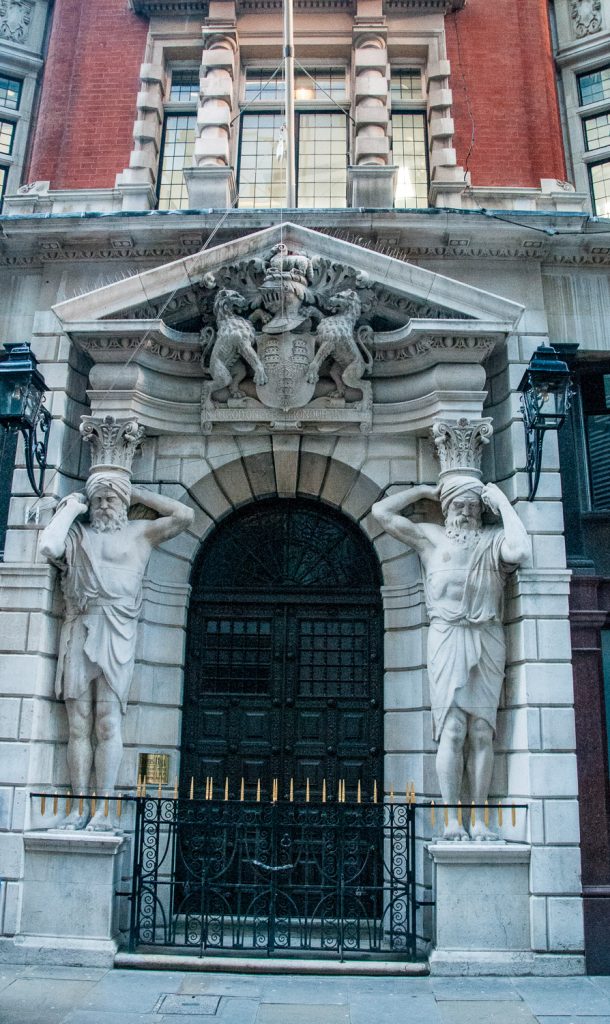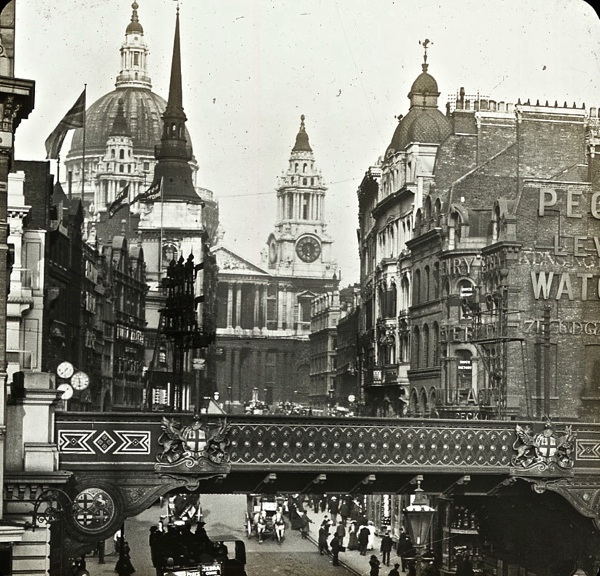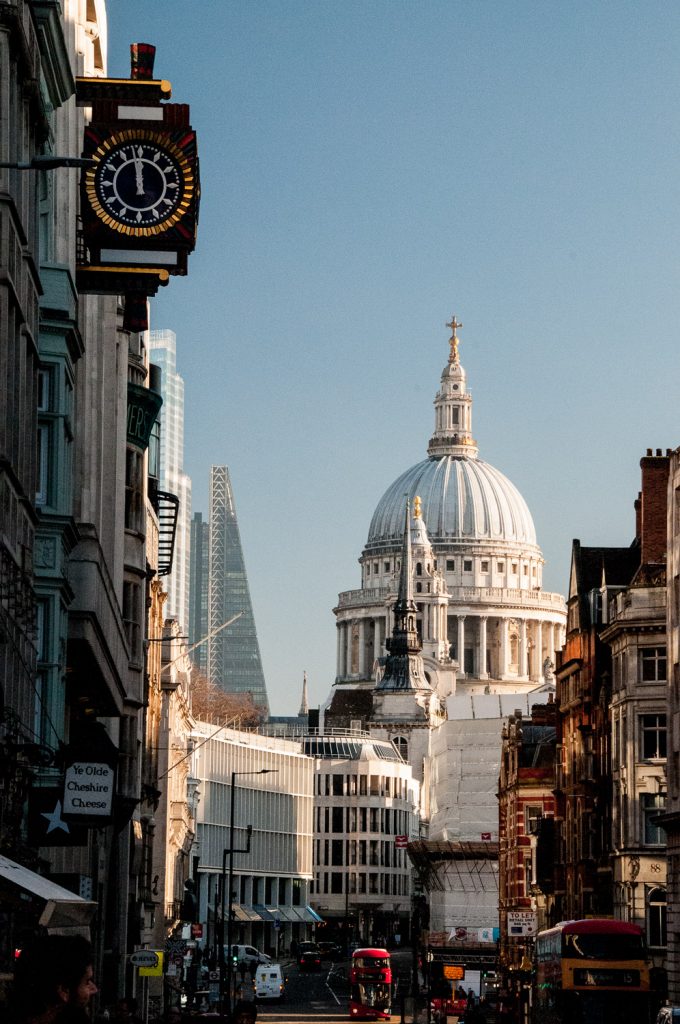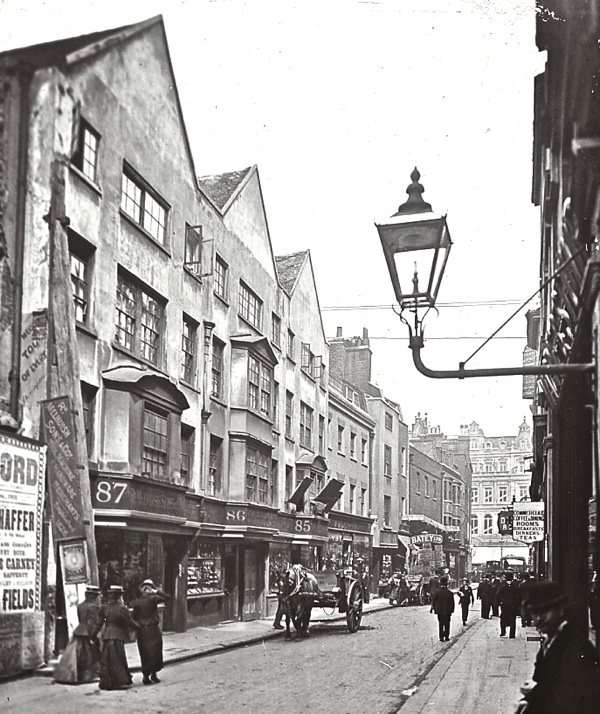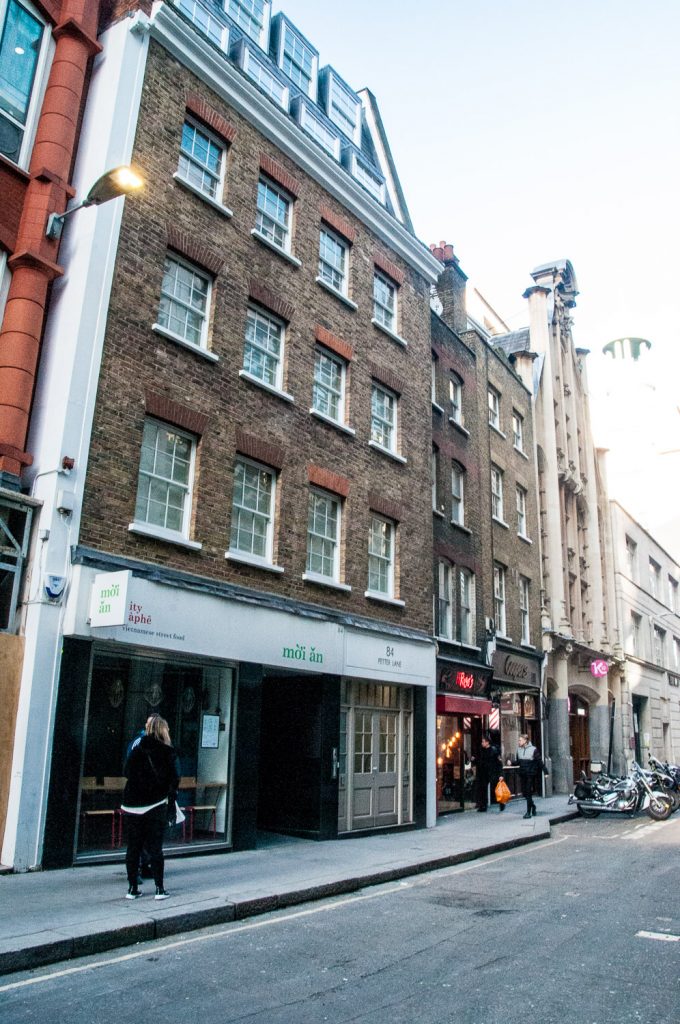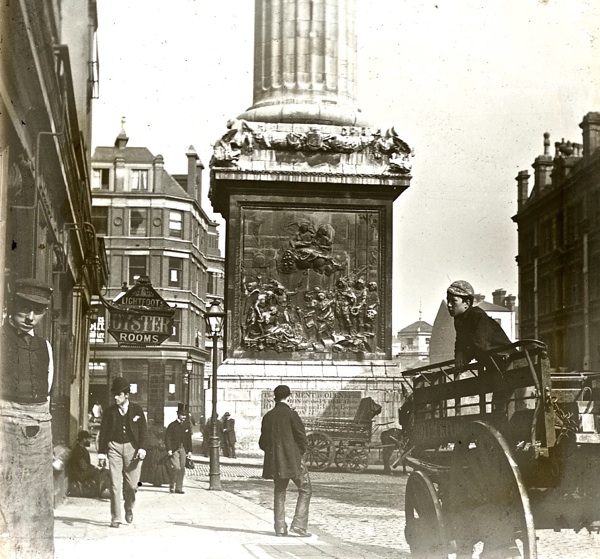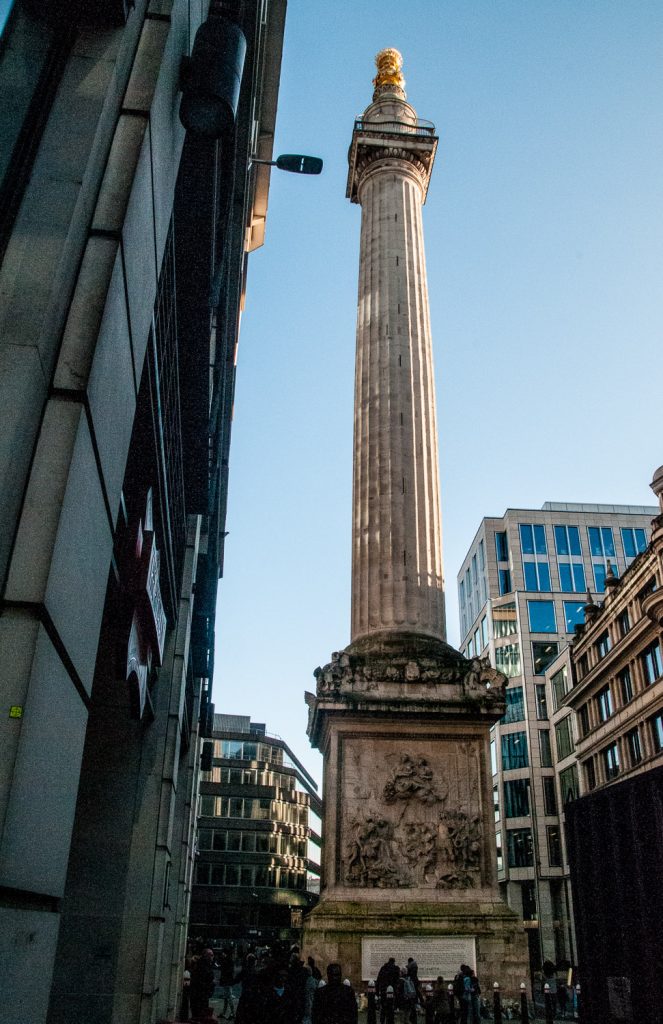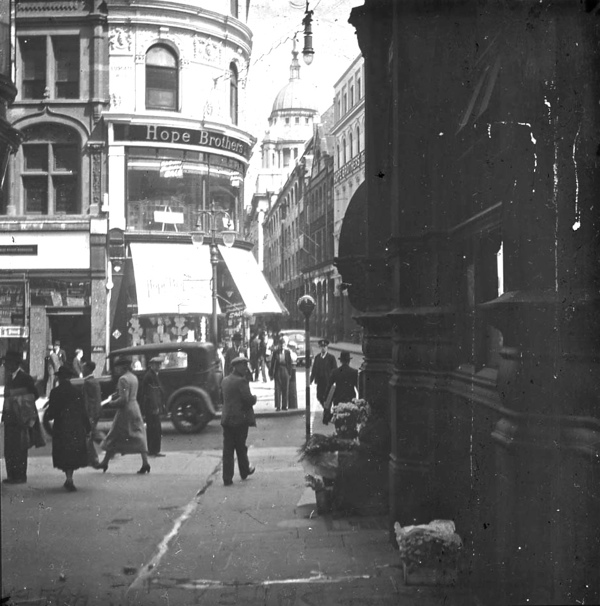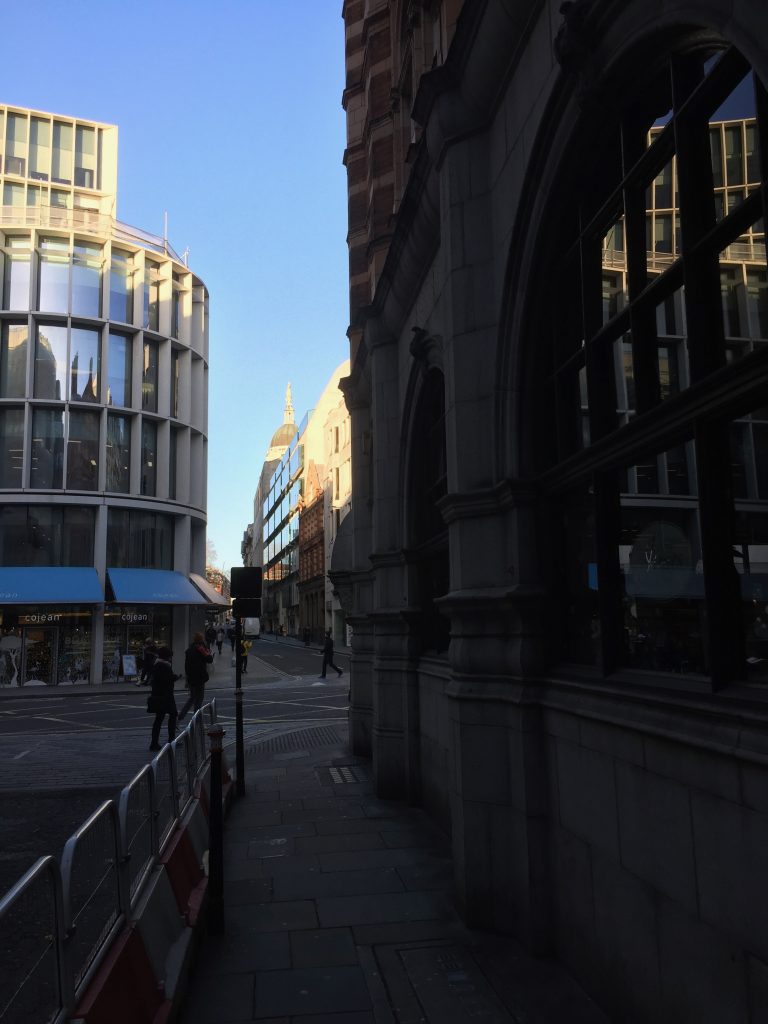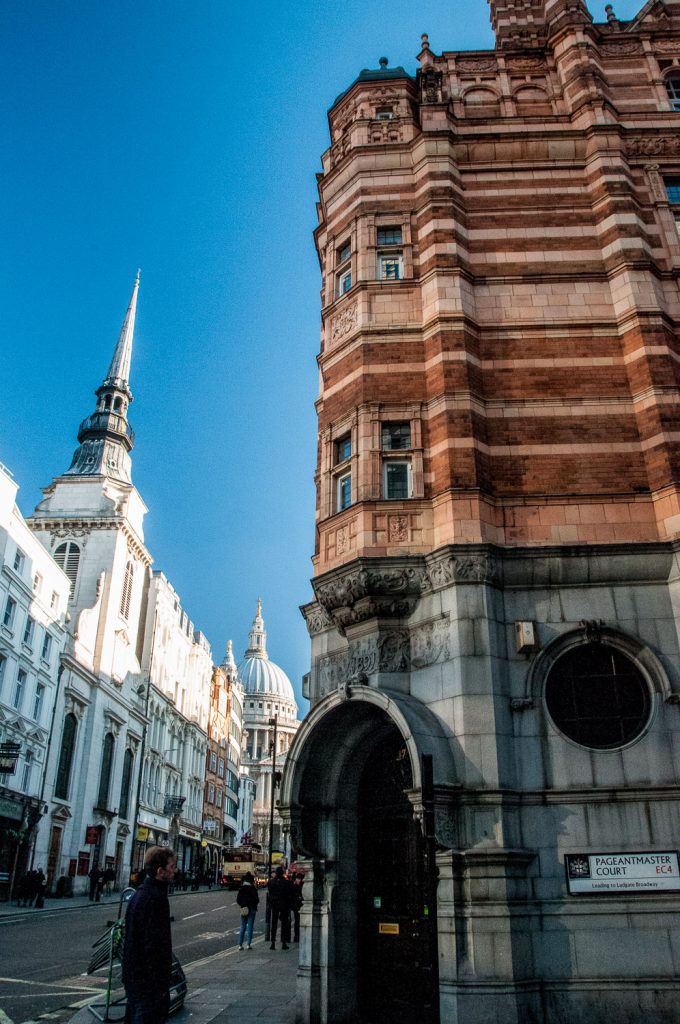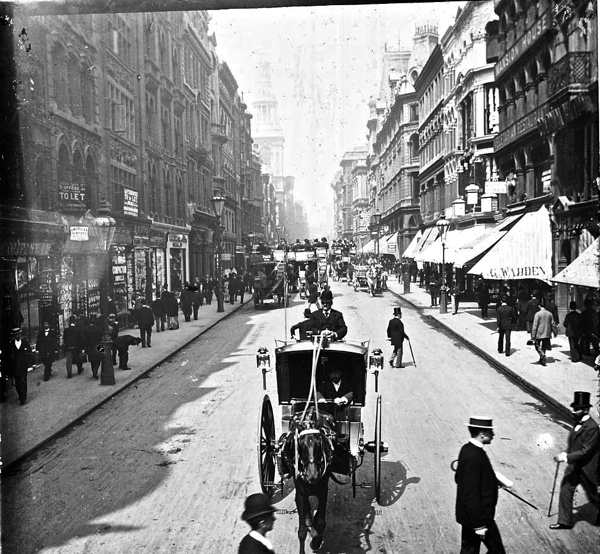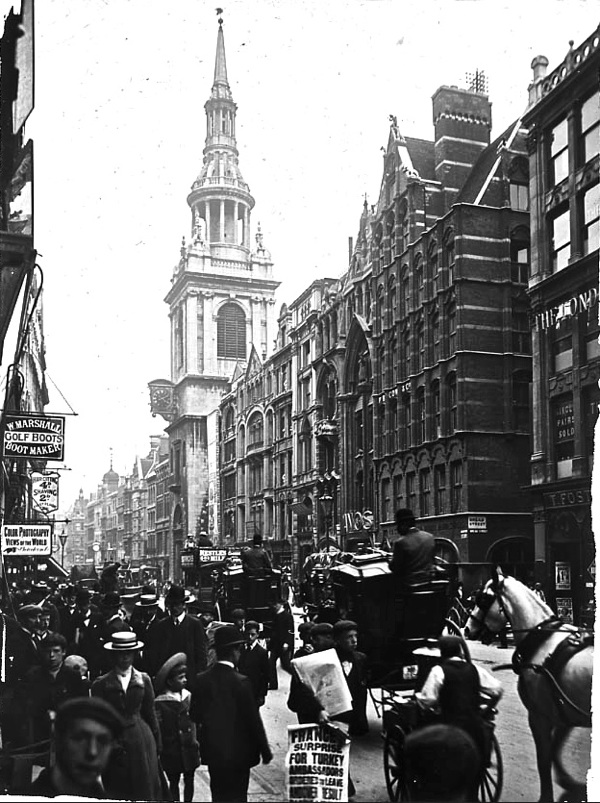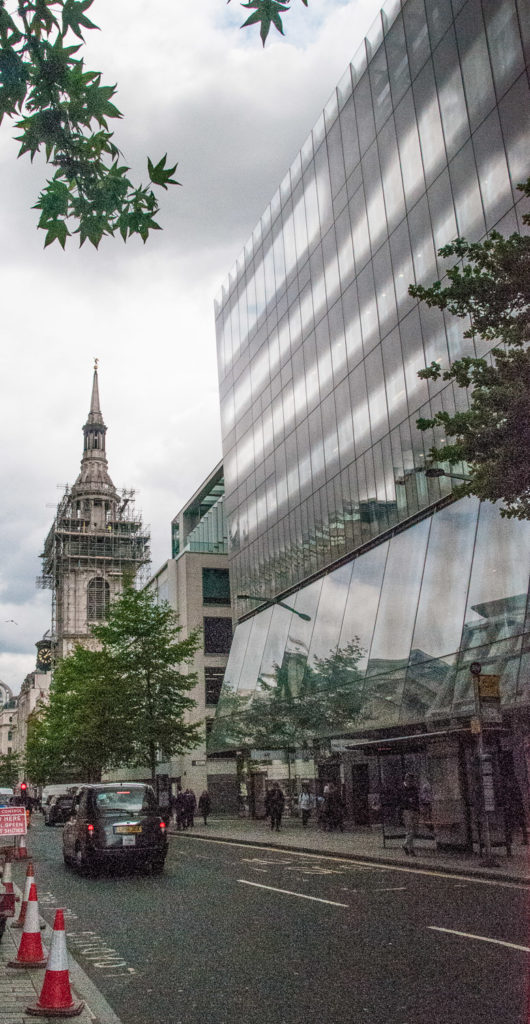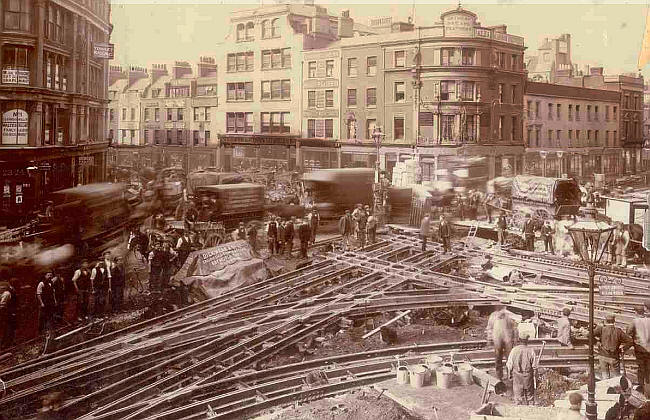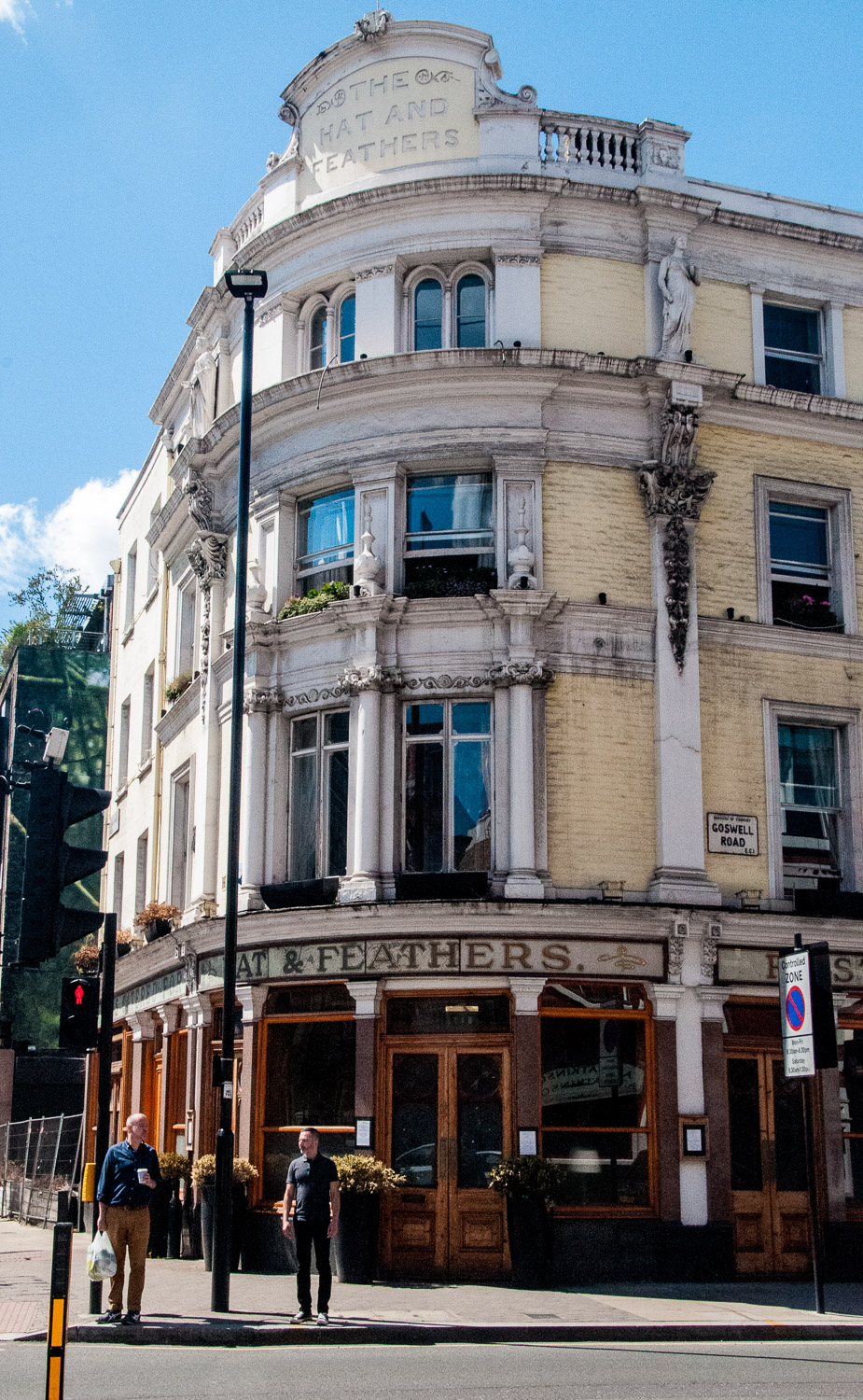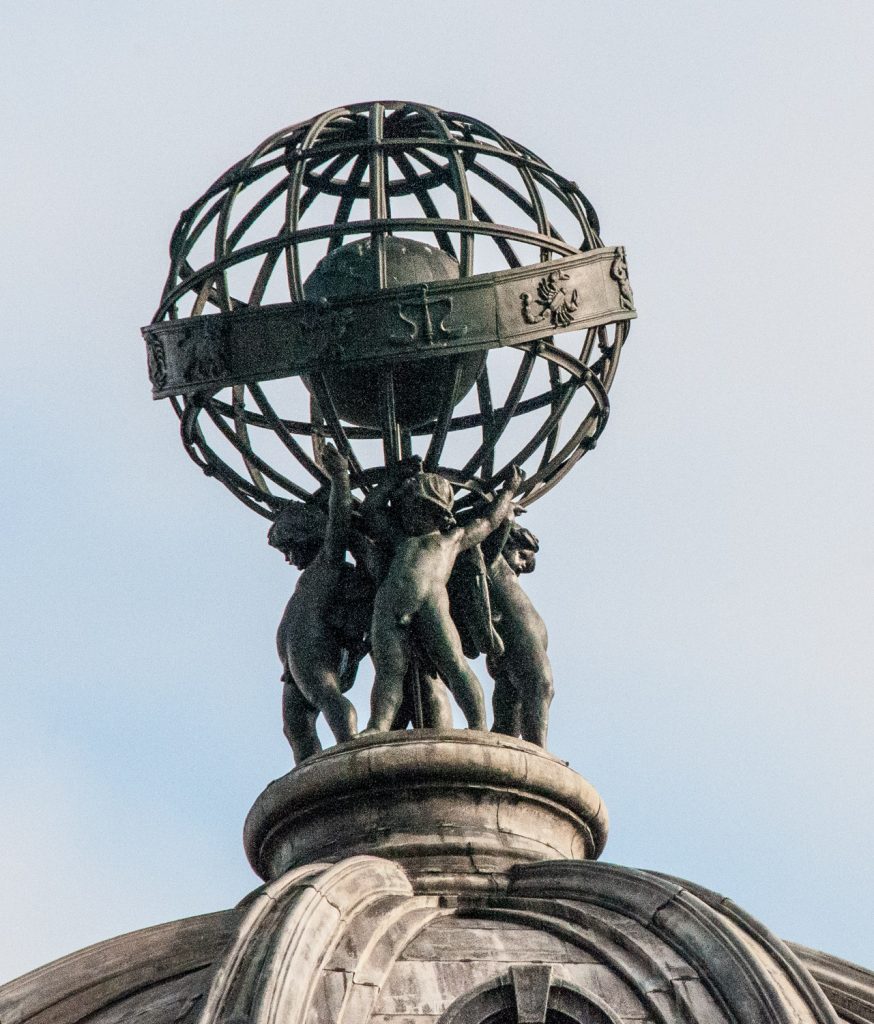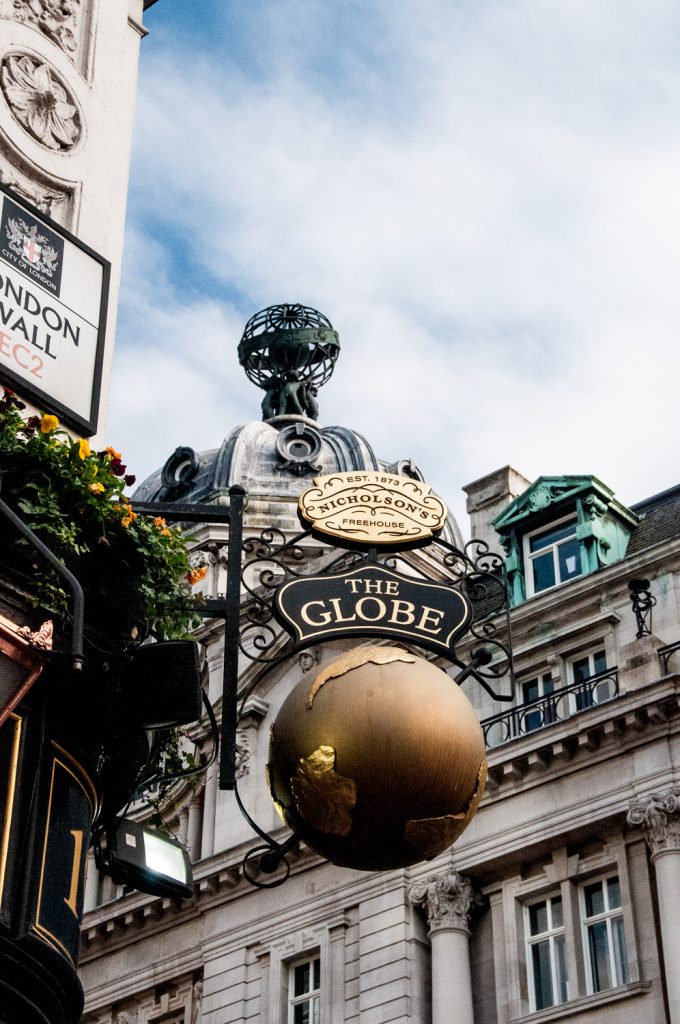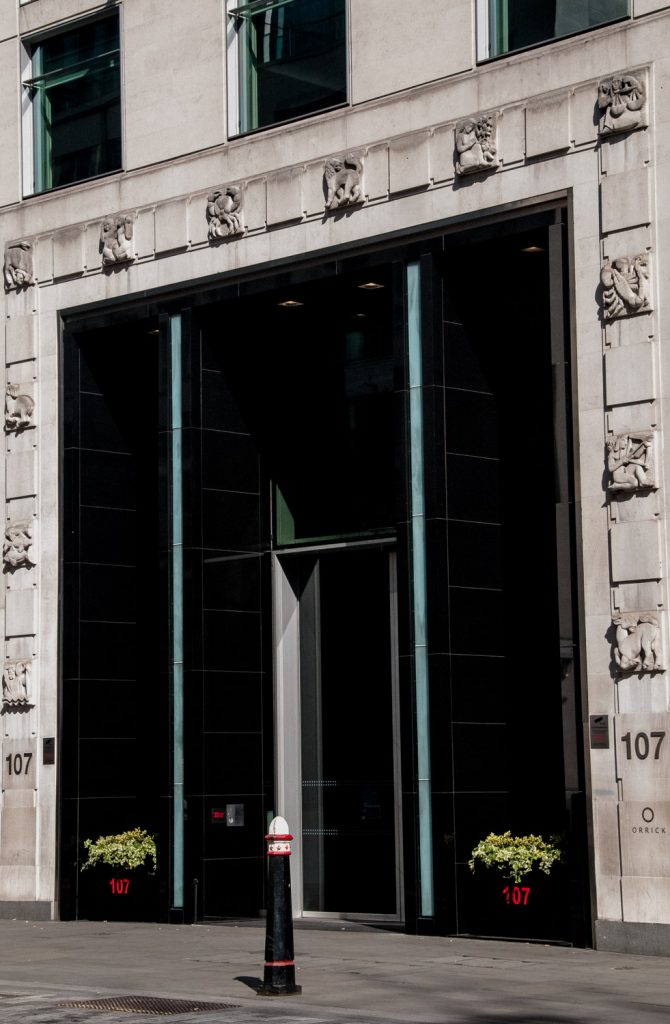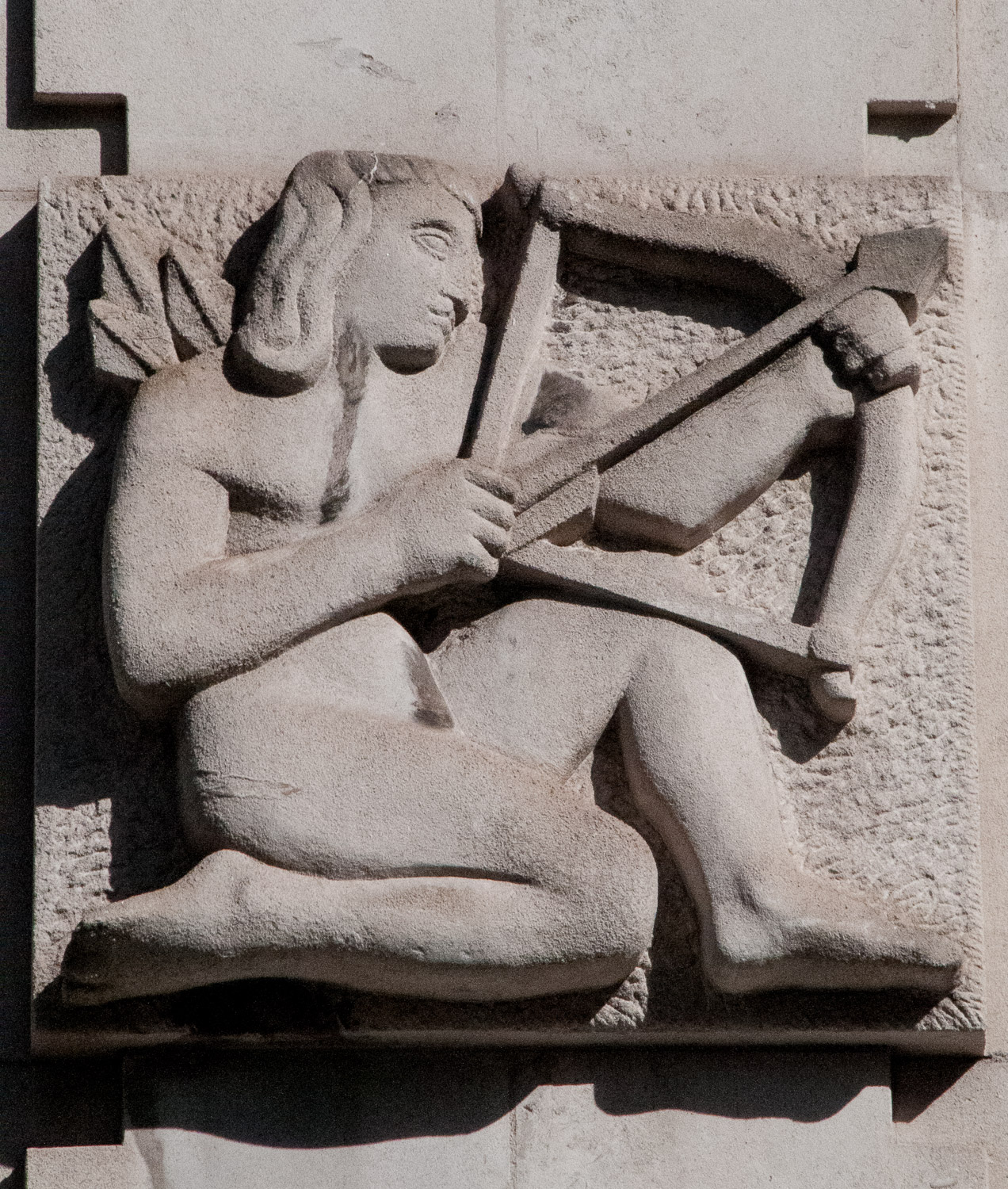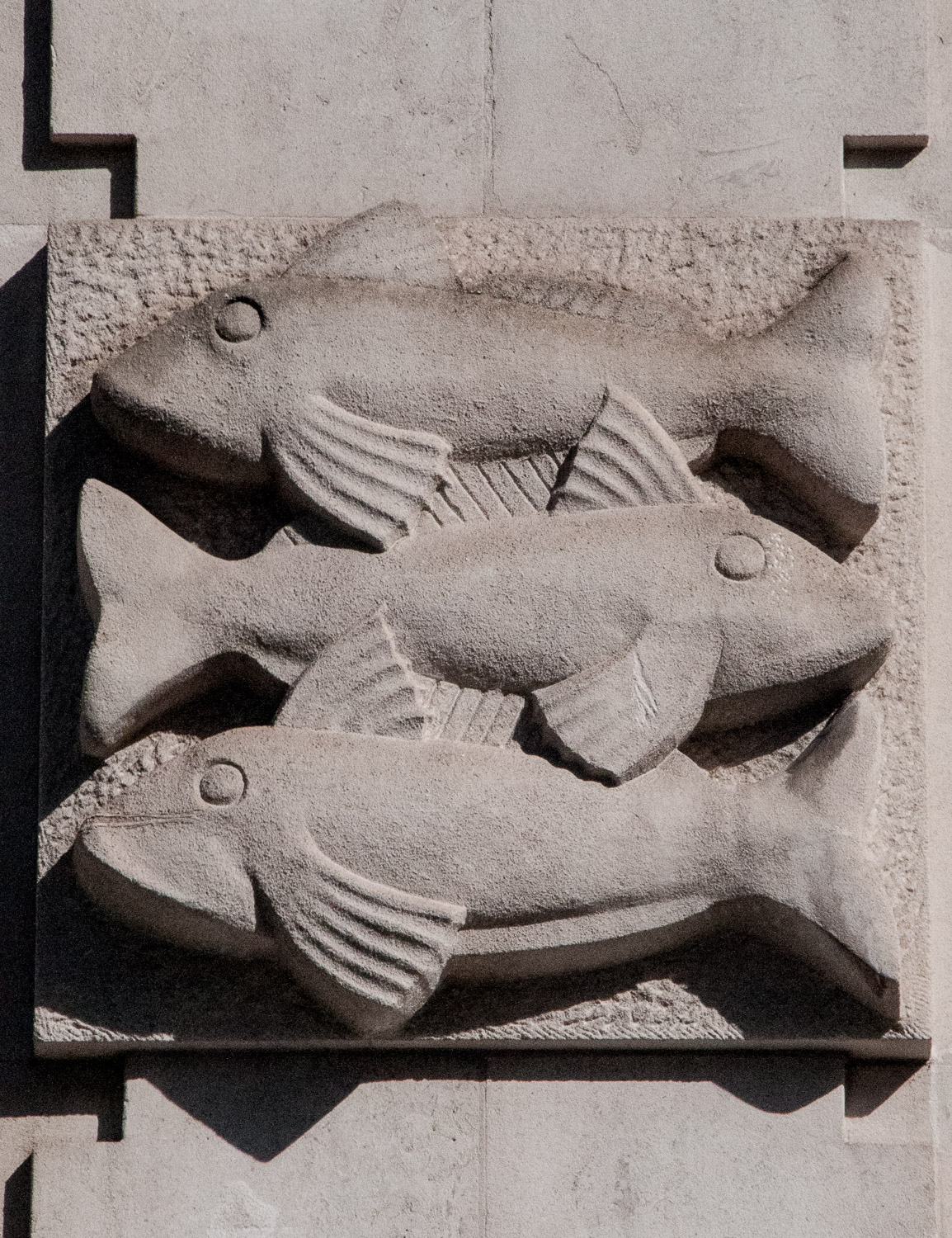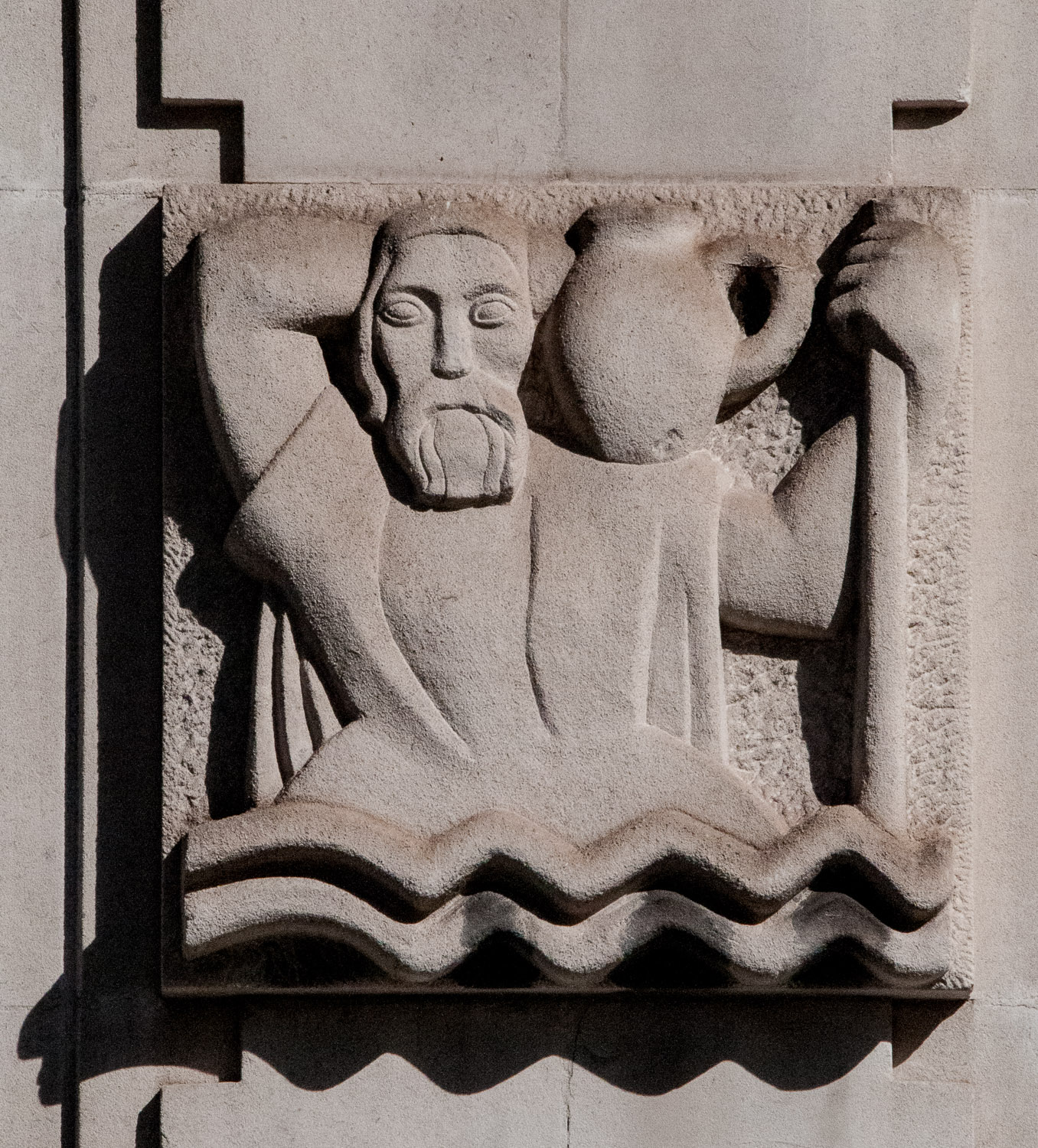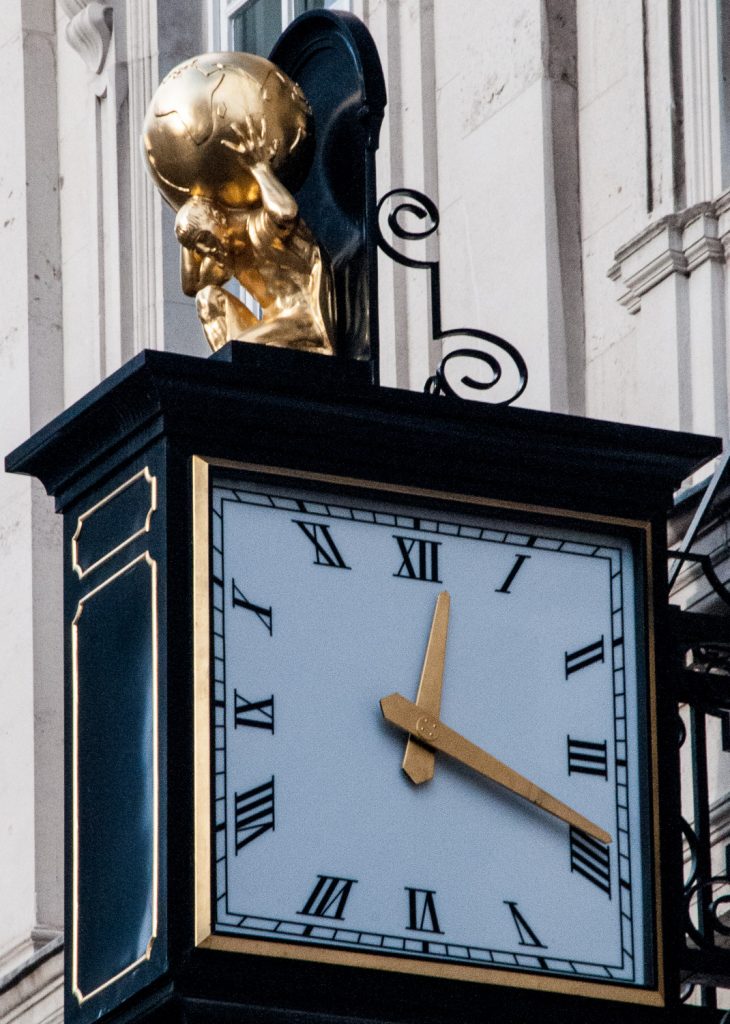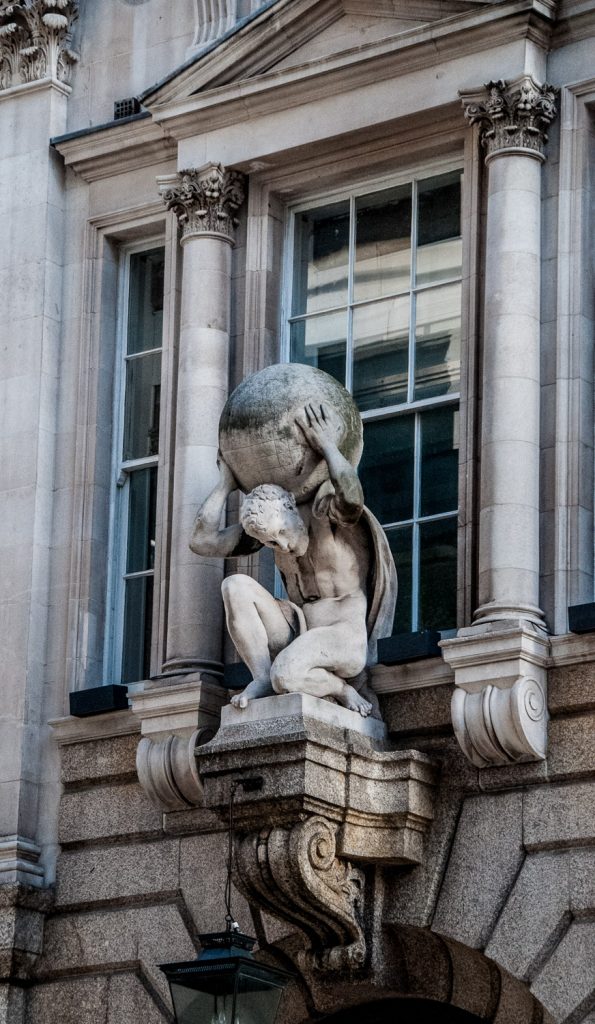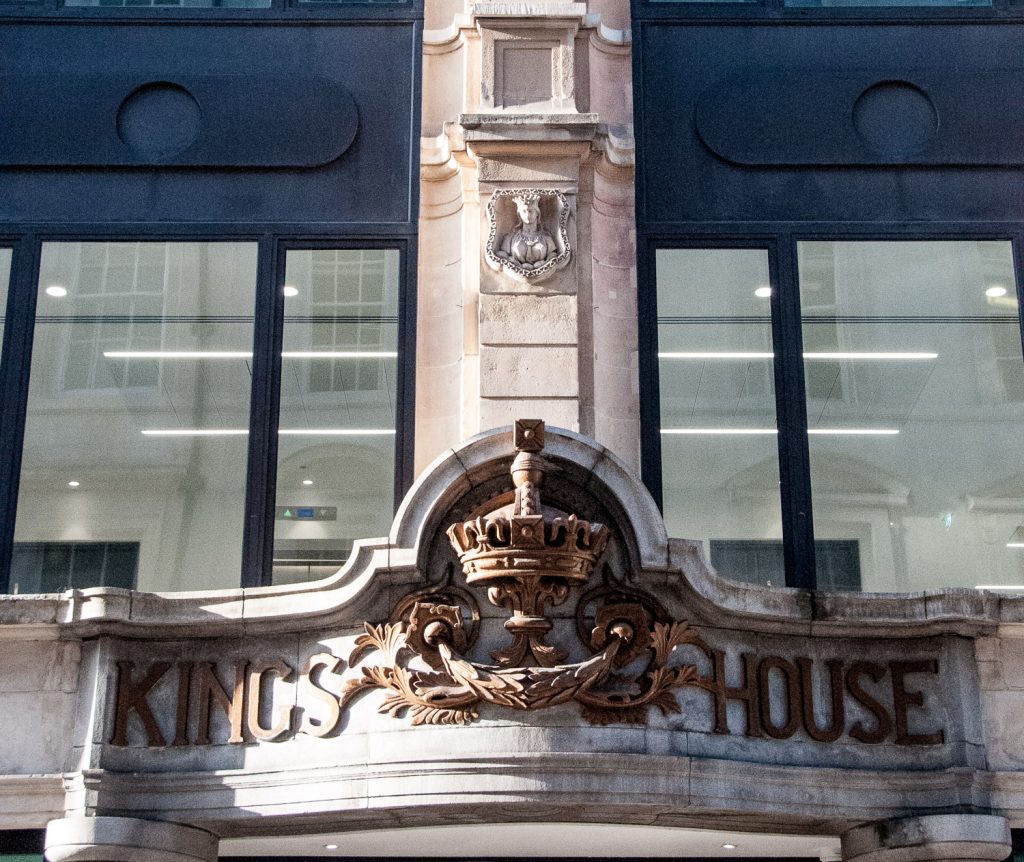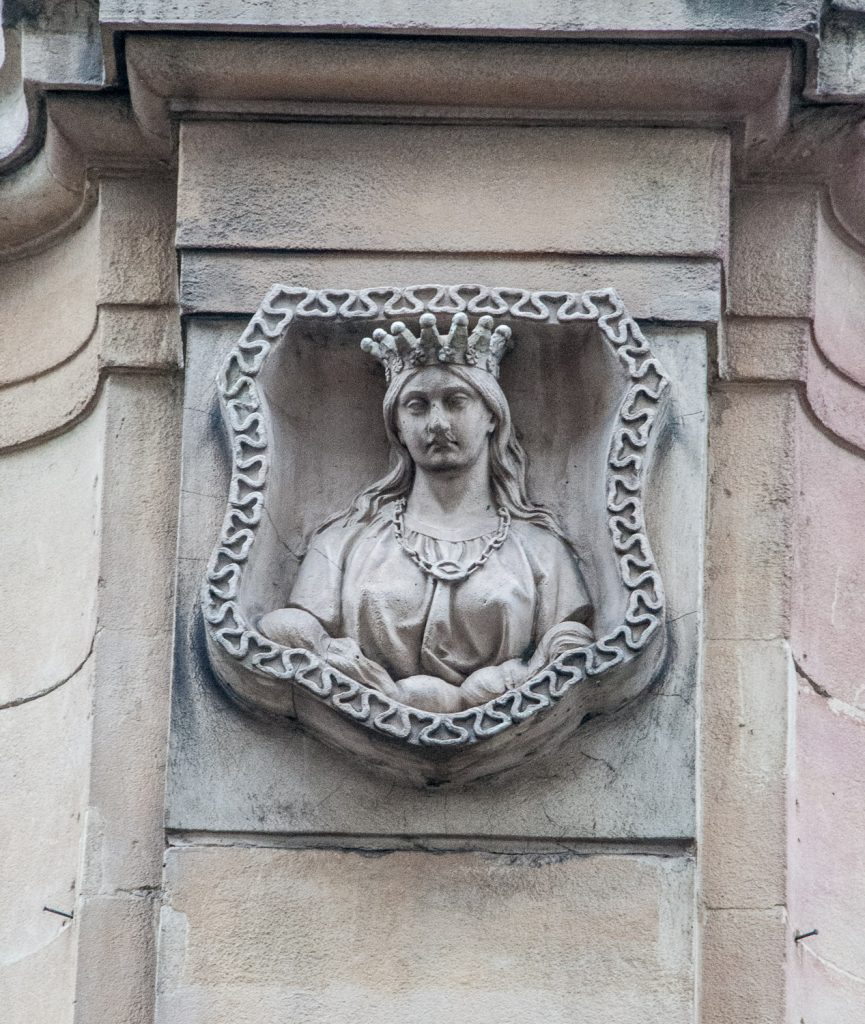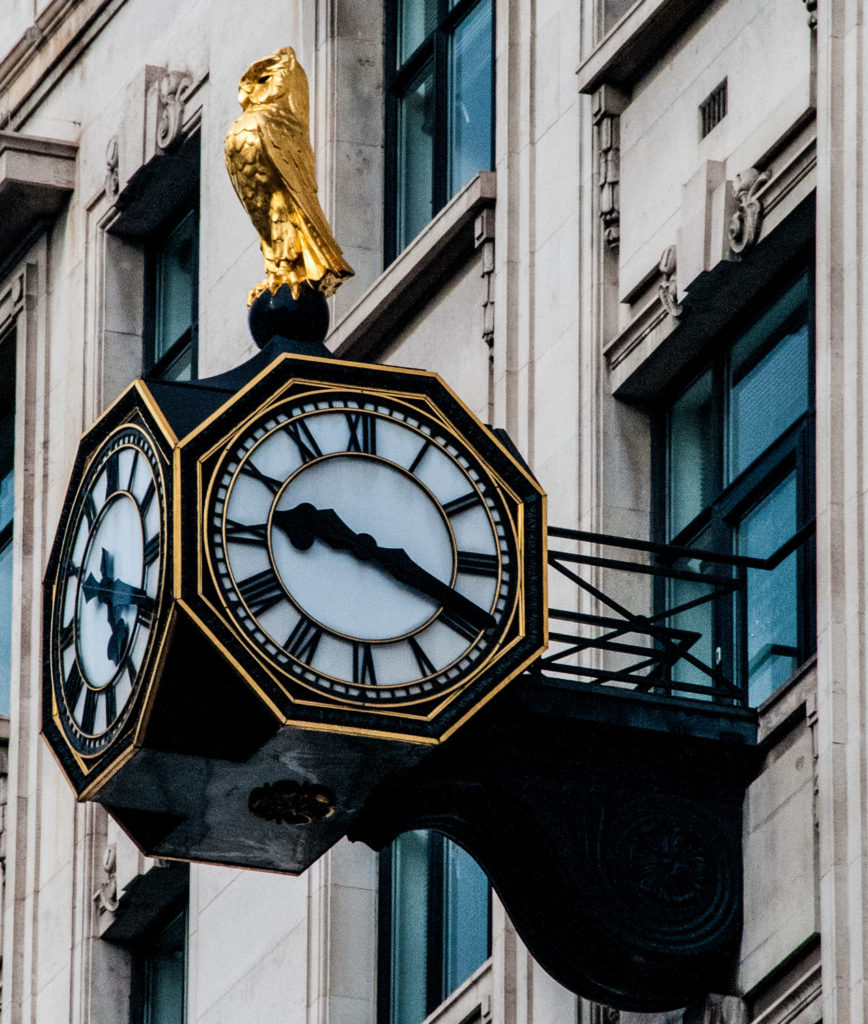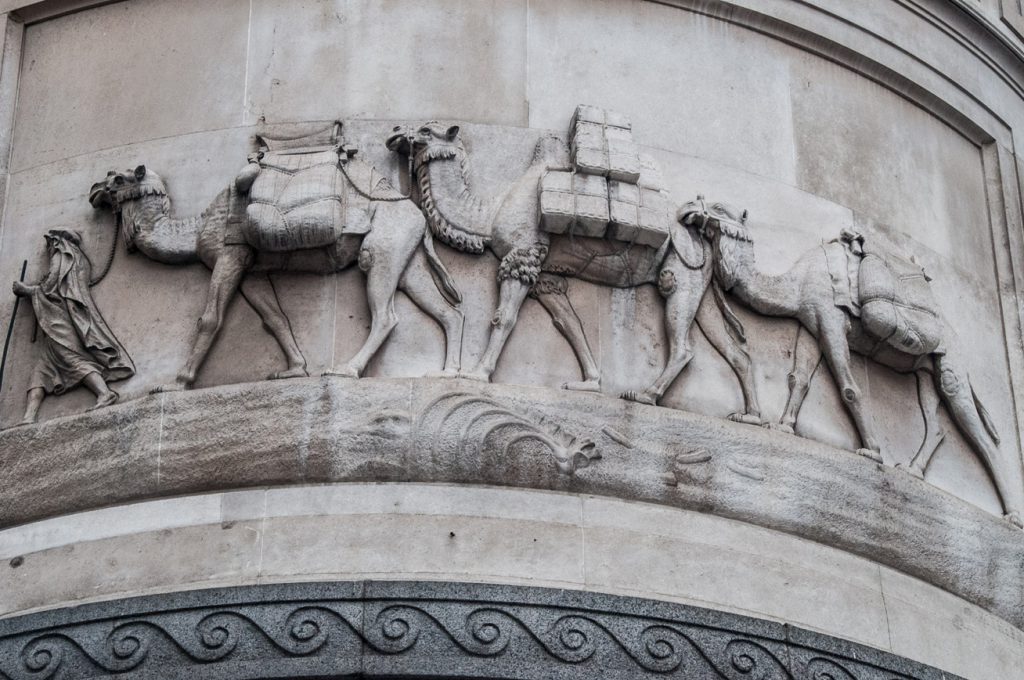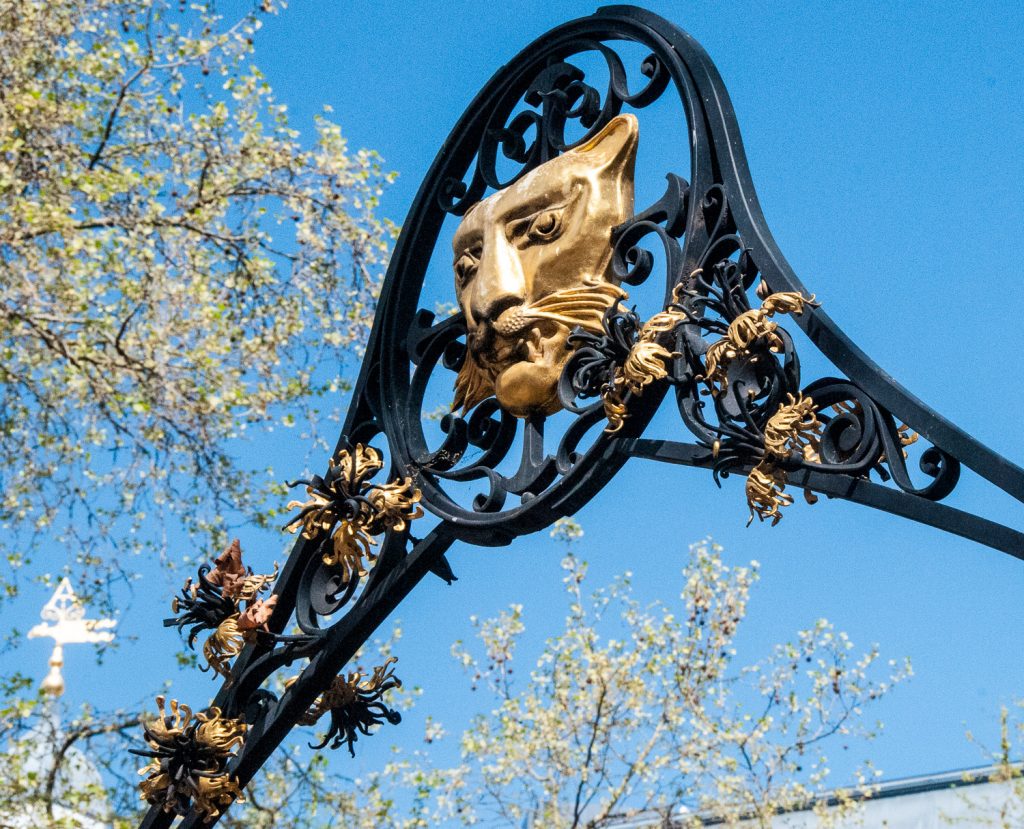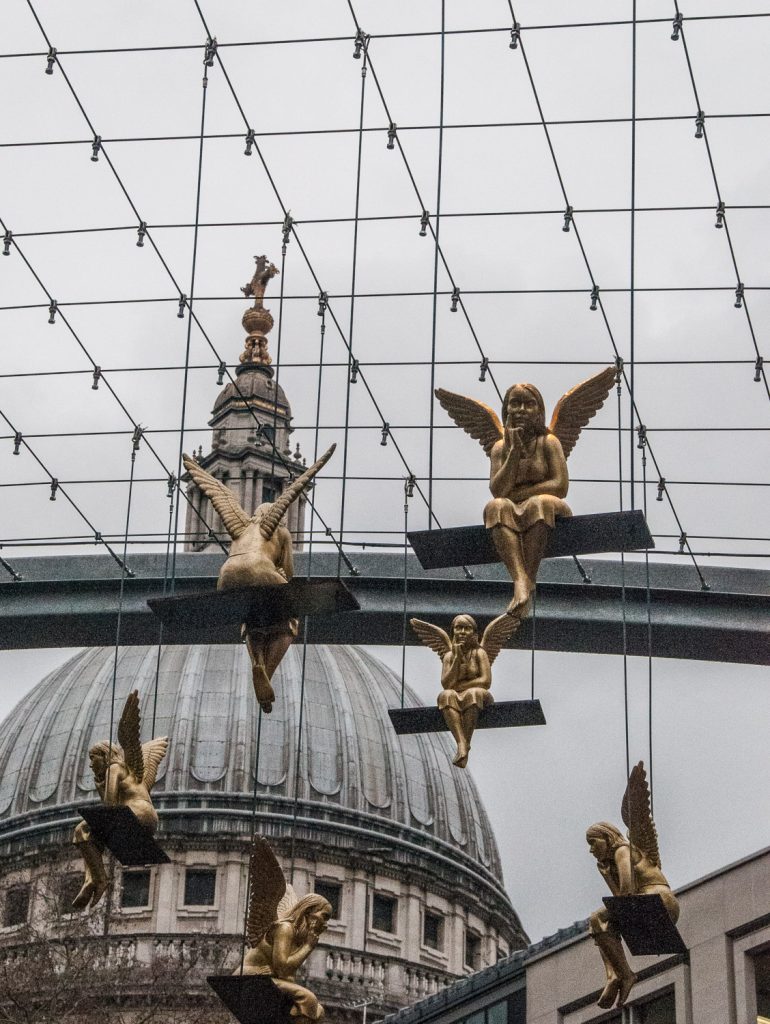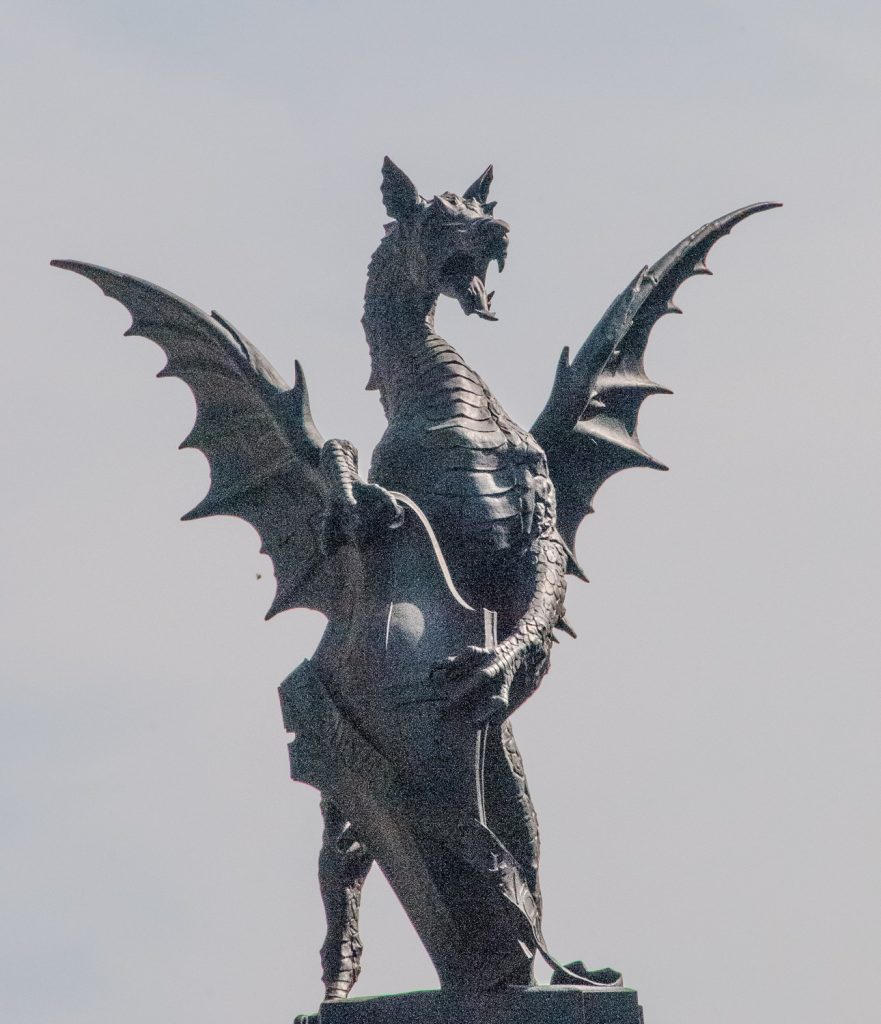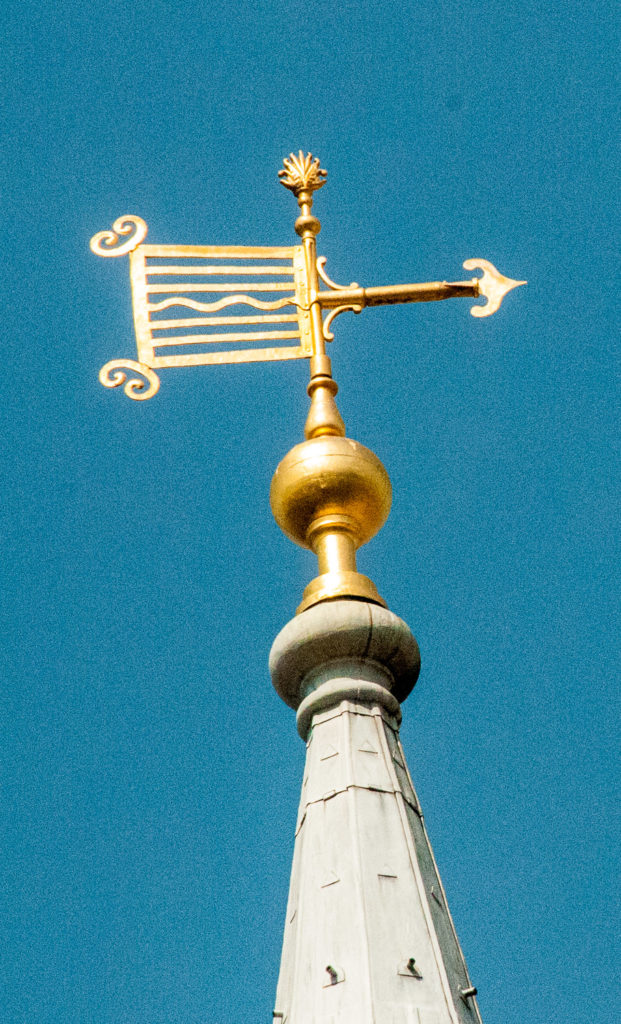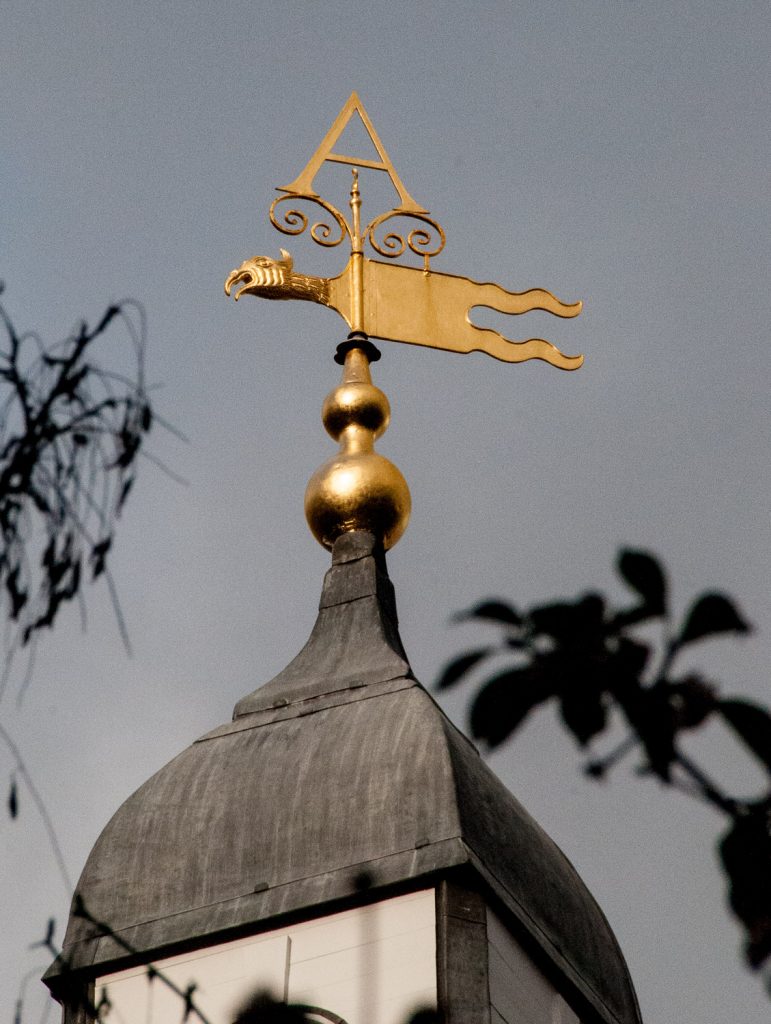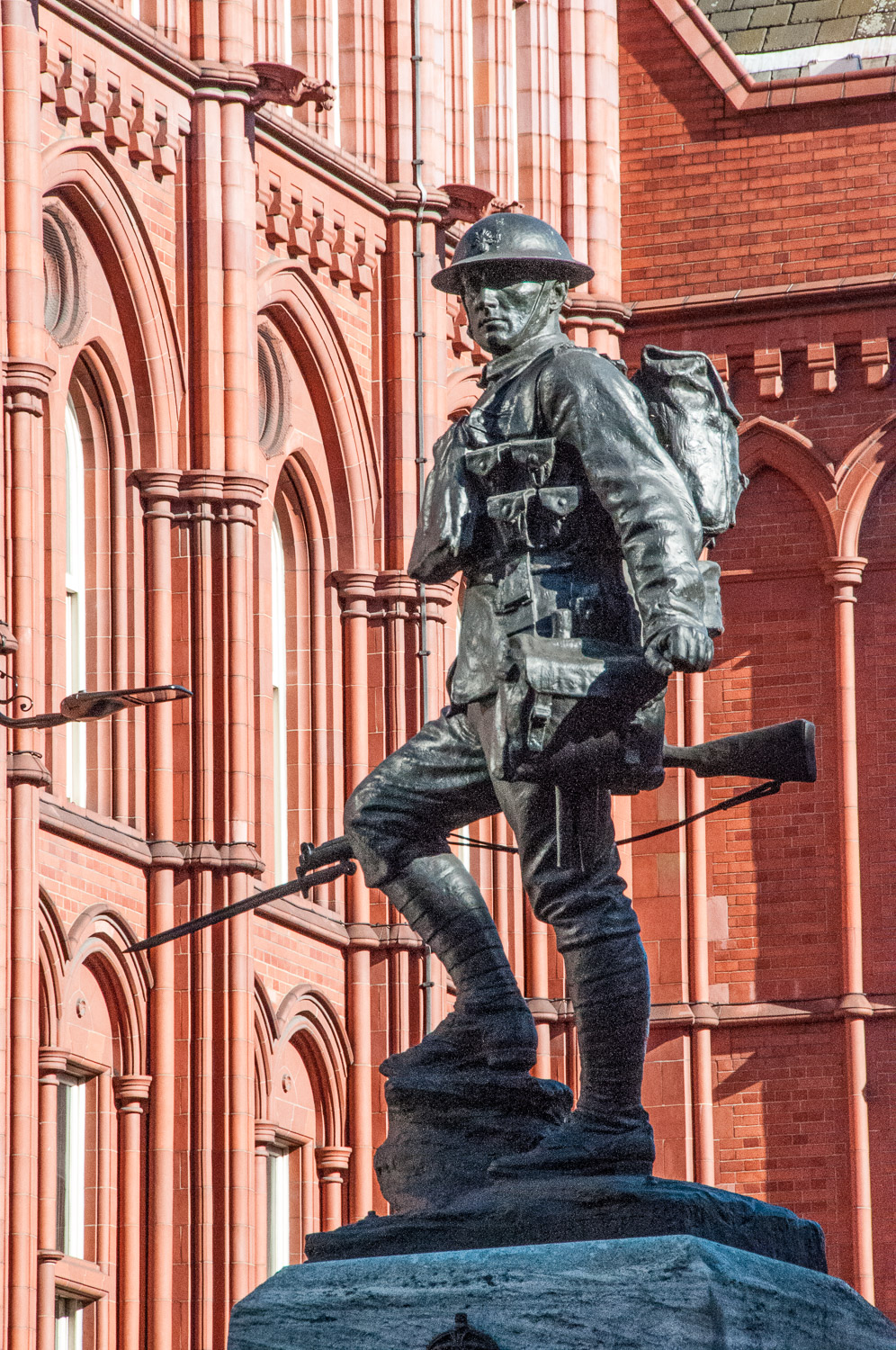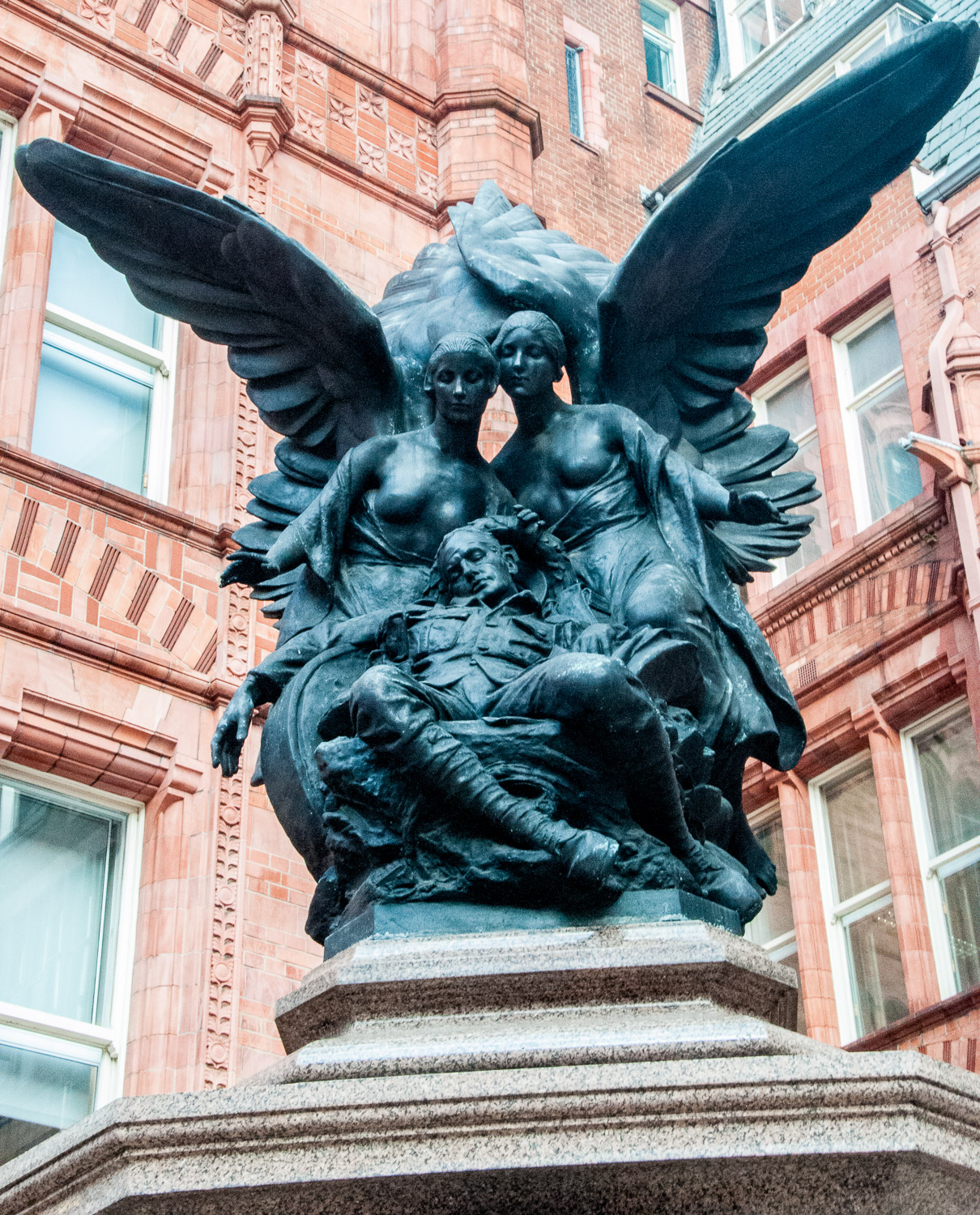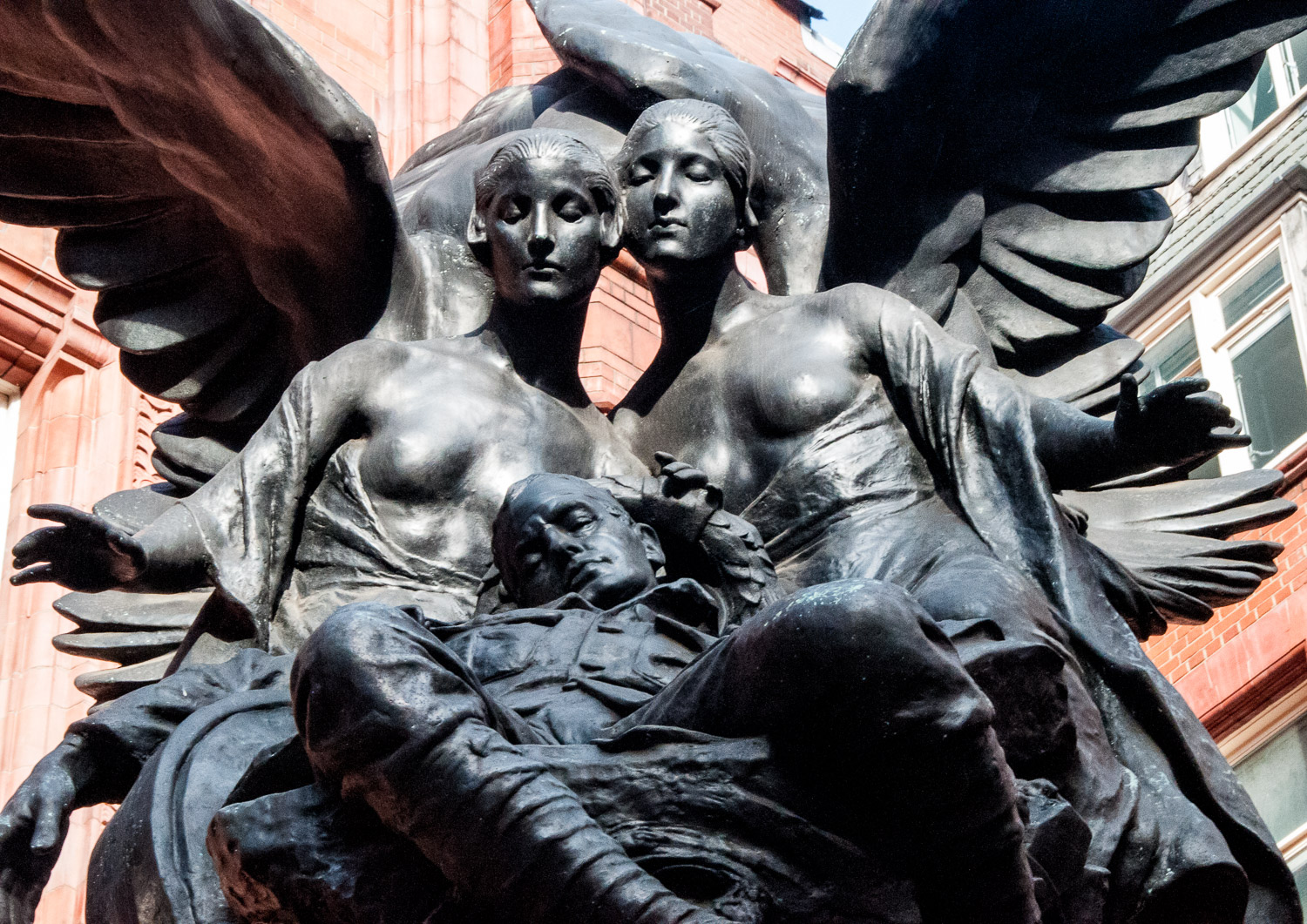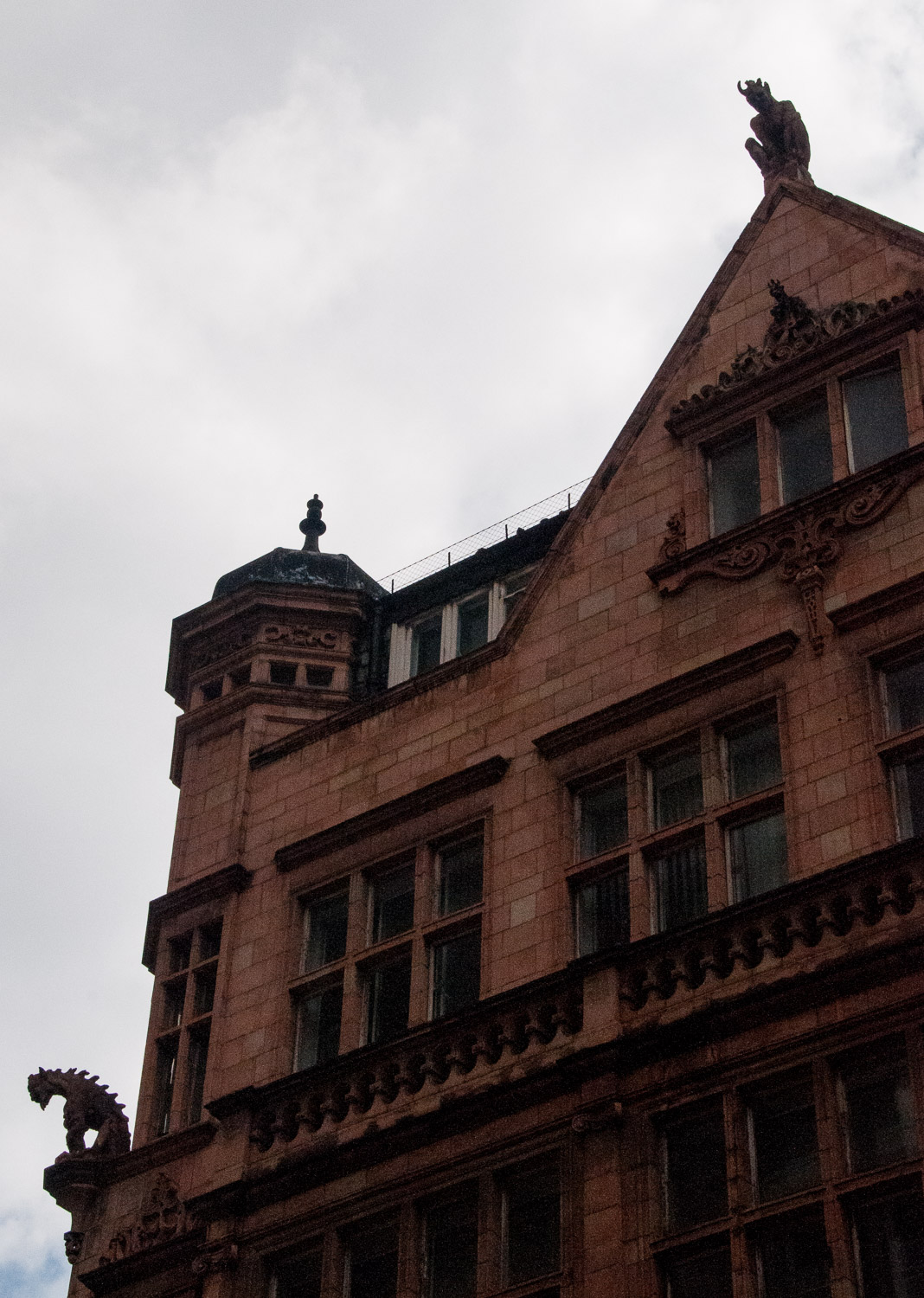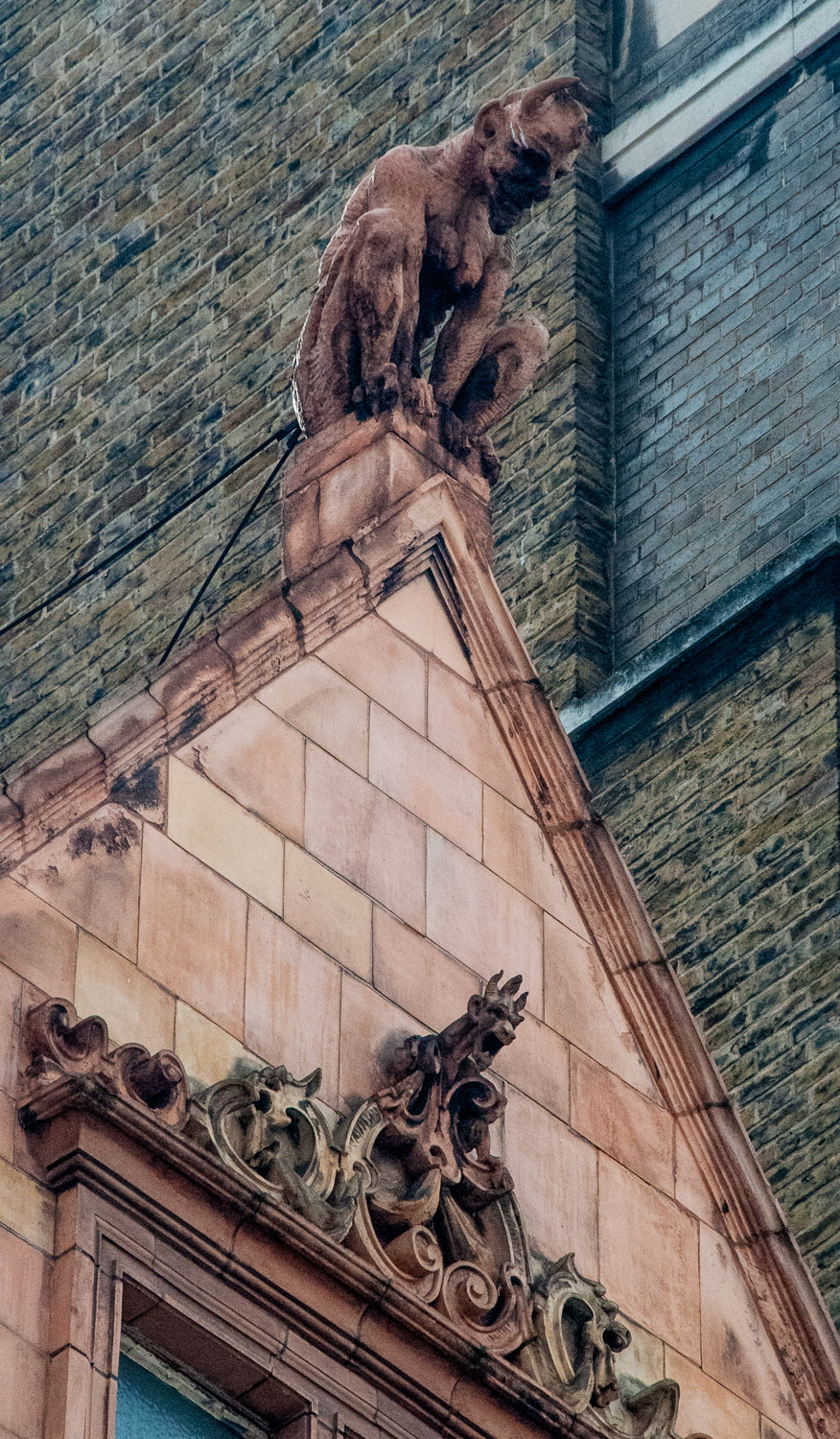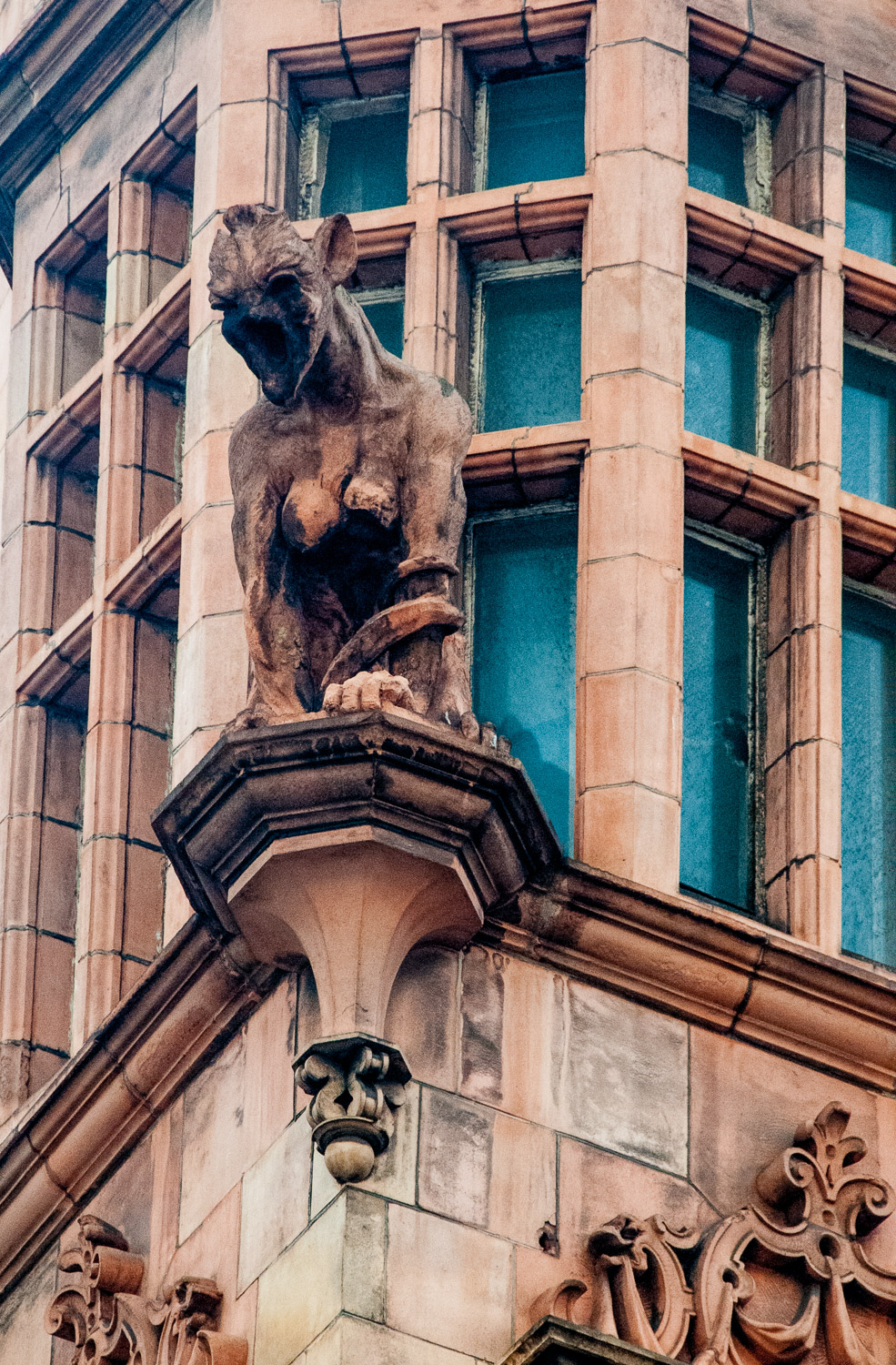As I think I have said before, I never tire of walking around this part of the City, especially spotting things of interest simply by directing my gaze skywards.
I remember the heyday of printed news when the Fleet Street hostelries were frequently packed with journalists, lawyers and print workers ‘refreshing’ themselves at lunchtime and in the evening. Now you are more likely to encounter overseas visitors seeking out ‘authentic old English pub’ experiences.
Mr Punch advertises these listed premises at the east end of the street …
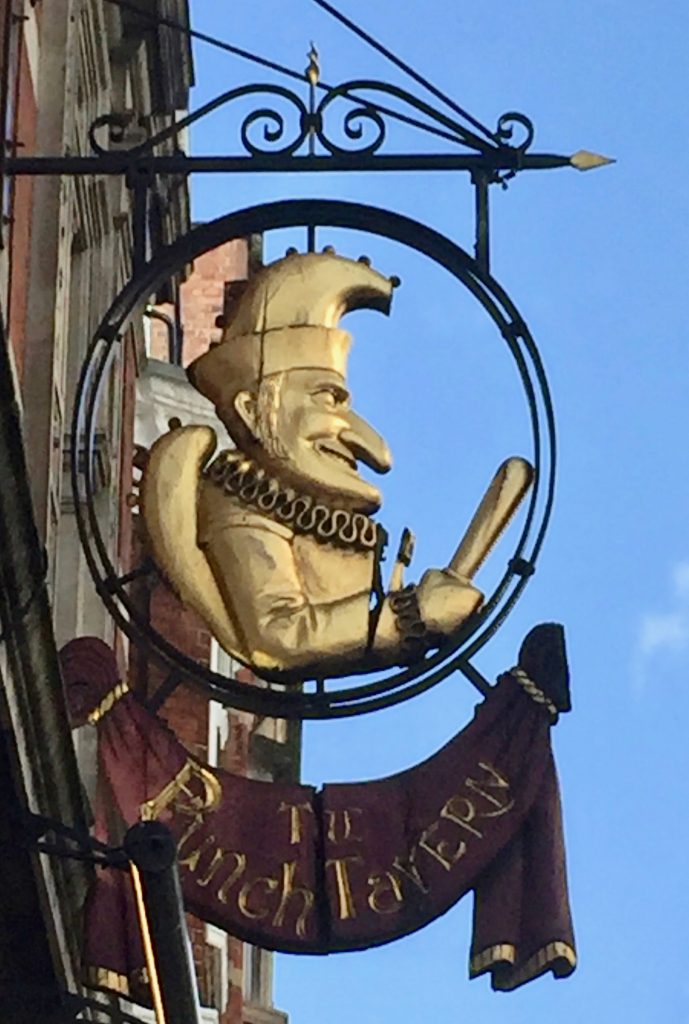
The previous building on the site was known as the Crown and Sugar Loaf but was renamed the Punch Tavern in the late 1840s because of its association with Punch Magazine which had its offices at that end of Fleet Street.
The Old Bell further west is also listed …
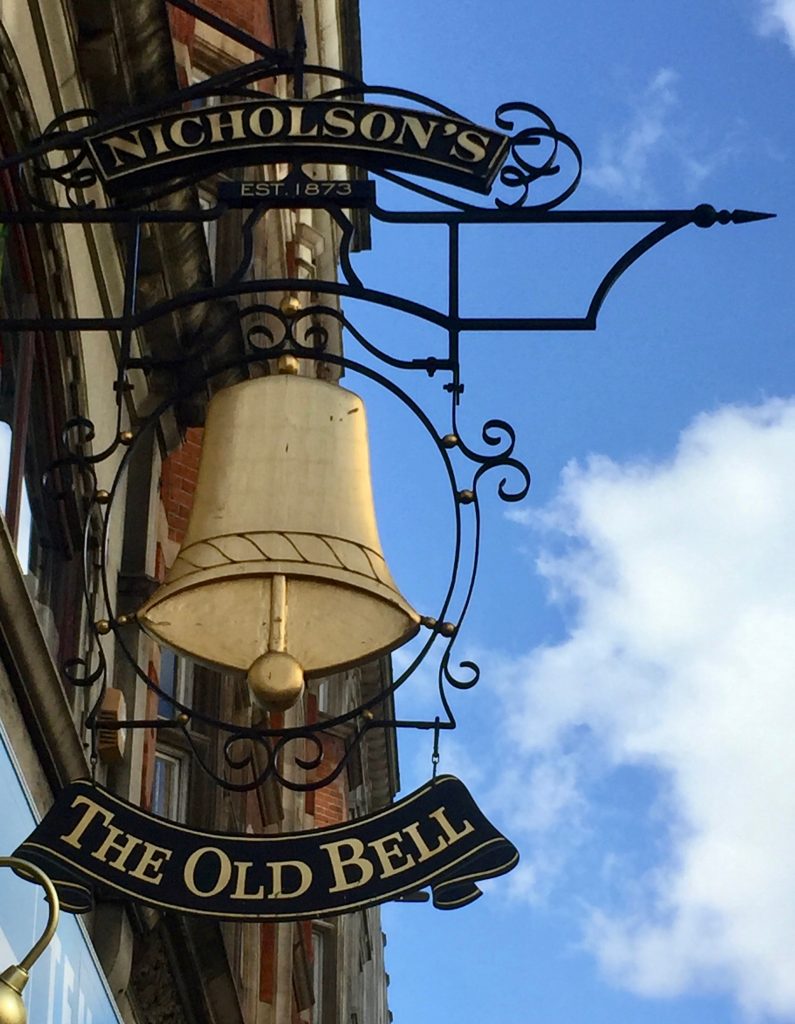
The story goes that it was built by Sir Christopher Wren to accommodate the stonemasons working on nearby St Bride’s Church and the rear of the pub does, indeed, date from 1669.
Between the buildings you can glimpse St Bride’s and its famous ‘wedding cake’ spire as you proceed from east to west …
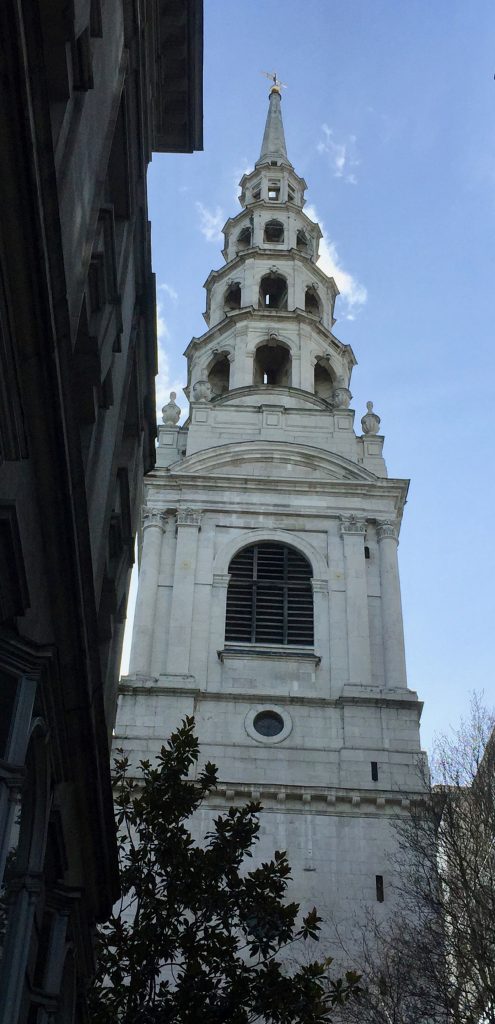
Why would a business stress ‘discretion’?
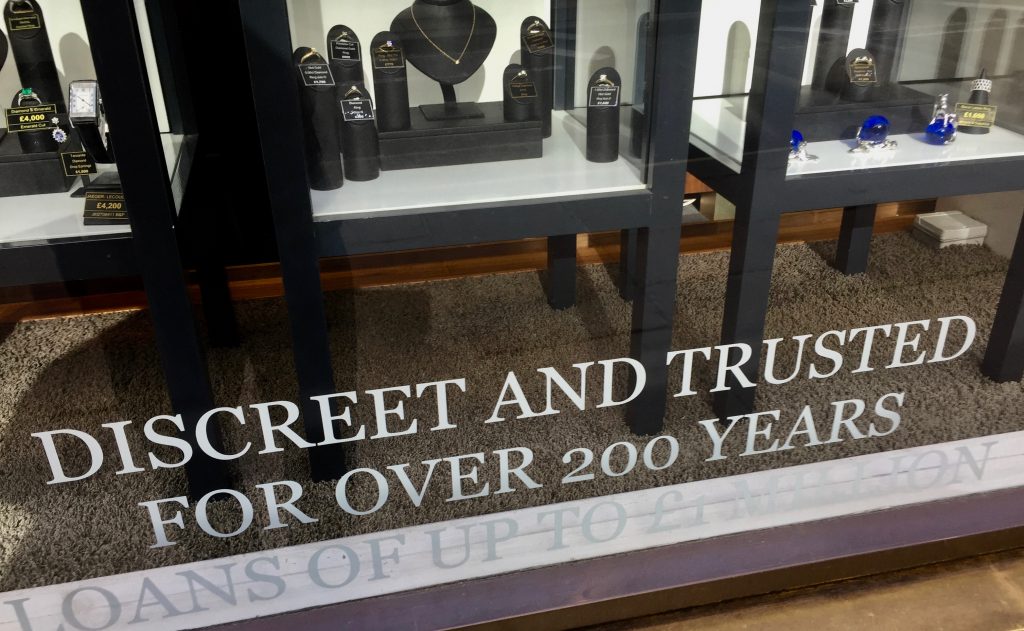
Because it’s a pawnbrokers, still advertising their presence using the symbol of three spheres suspended from a bar, said to be a reference to the coat of arms of the Florentine Medici family …
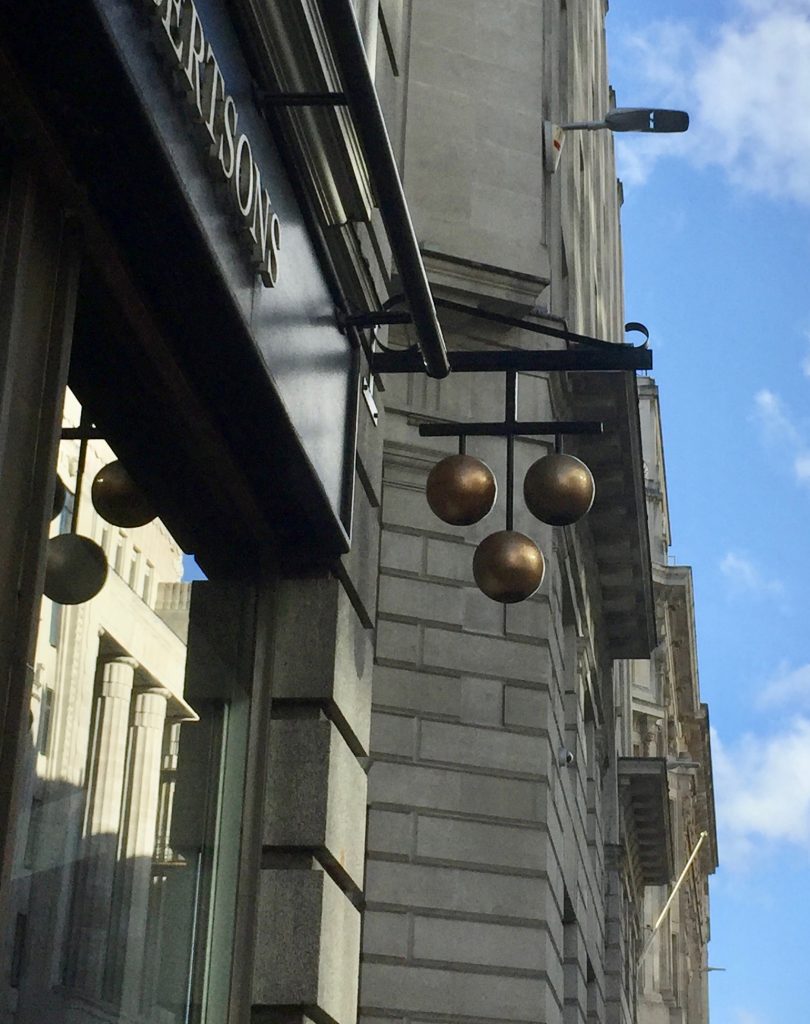
I love this pair of spectacles and thought at first that the sign must date from the 19th century but in fact Whitby & Co have only been around for 20 years …
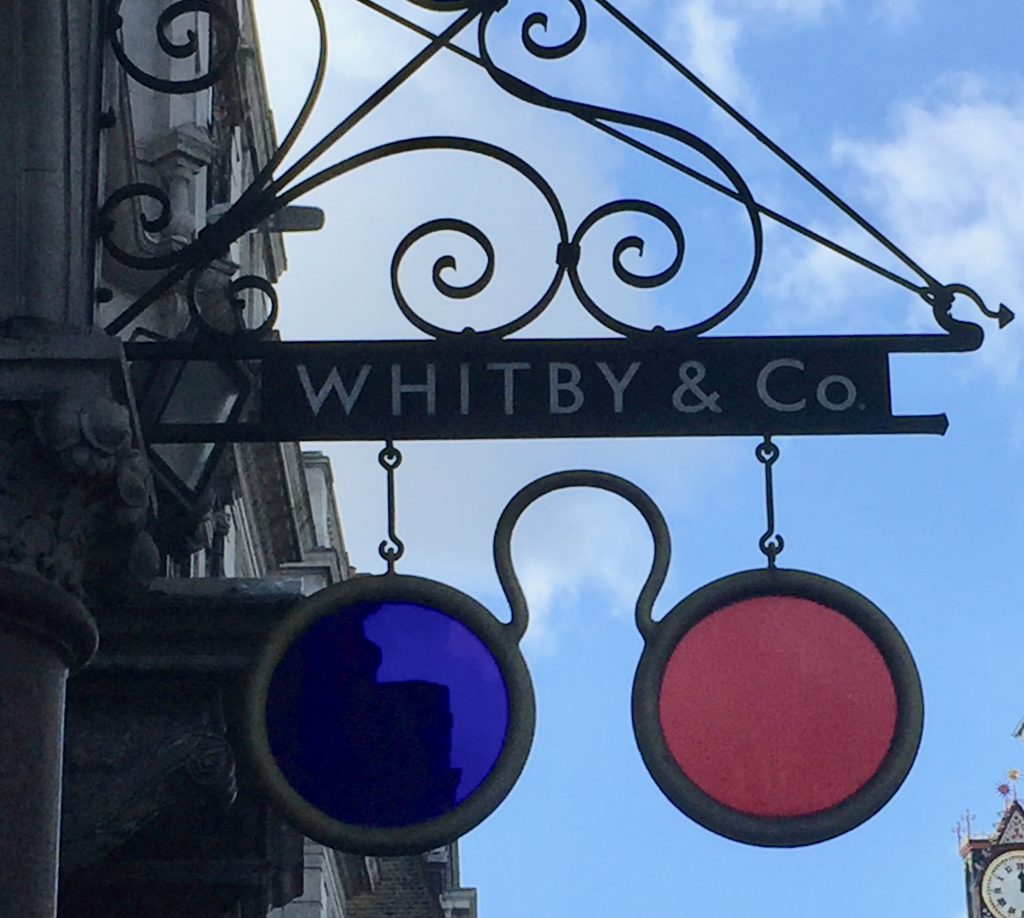
On the north side of the street you can see the evidence of past publications now, alas, defunct or relocated elsewhere …
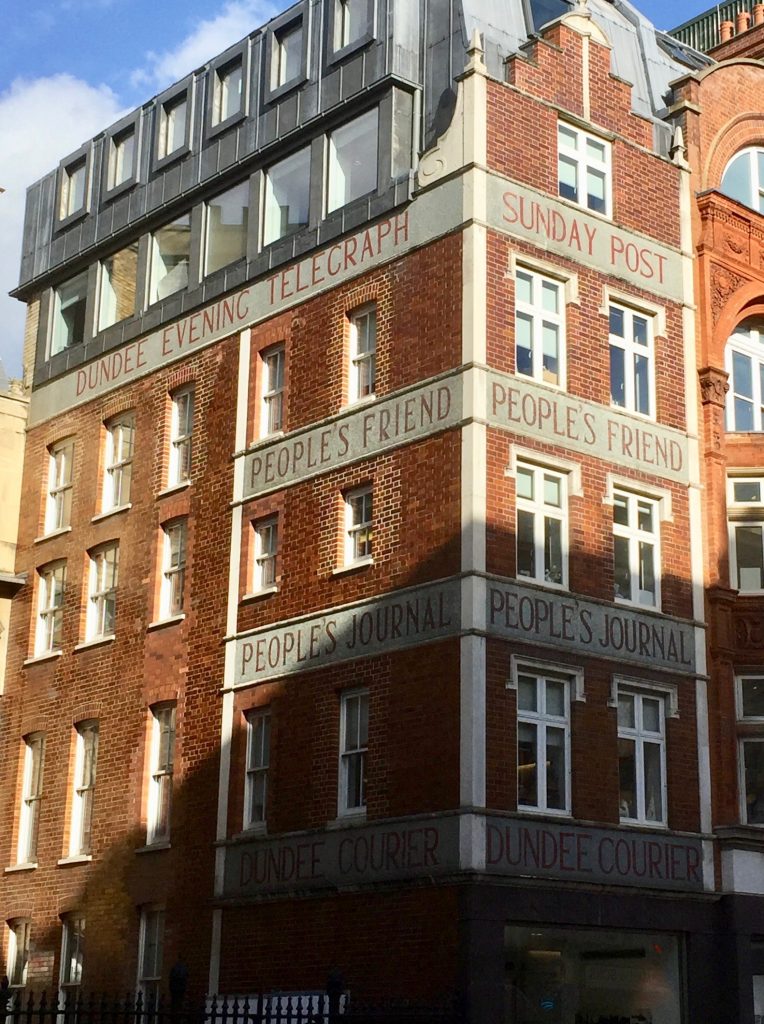
Further along are the premises previously occupied by the Kings & Keys pub, once a favourite hangout place for journalists from the Daily Telegraph next door. The name is derived by the amalgamation of two licences of separate former pubs, the Cross Keys and the Three Kings …
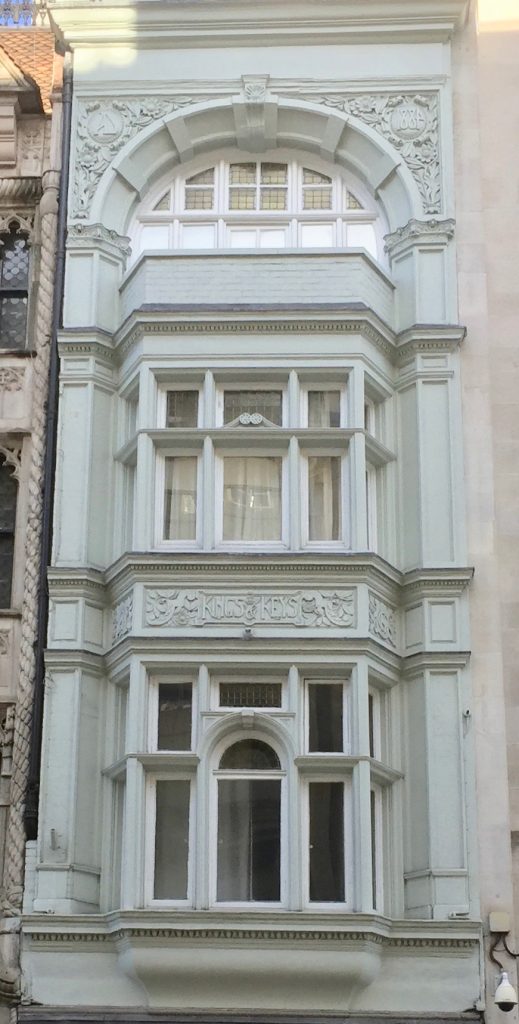
It’s narrow because, like many other buildings fronting Fleet Street, it follows the size of the original medieval plot.
If you are a little tired by now and need to recharge batteries there are healthy snacks available nearby …
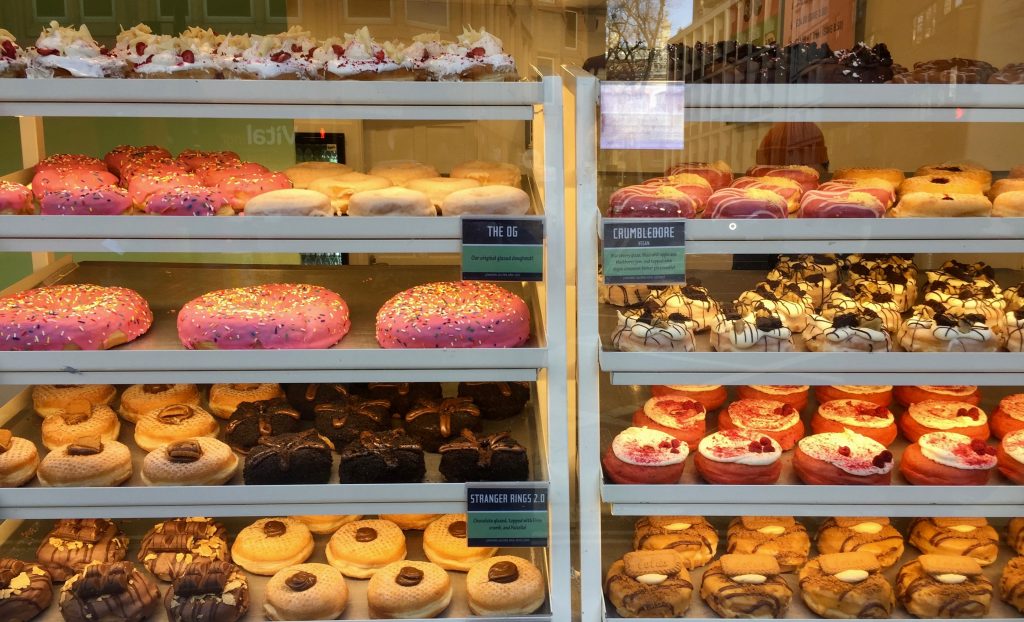
Onward to St Dunstan in the West which boasts this magnificent clock …
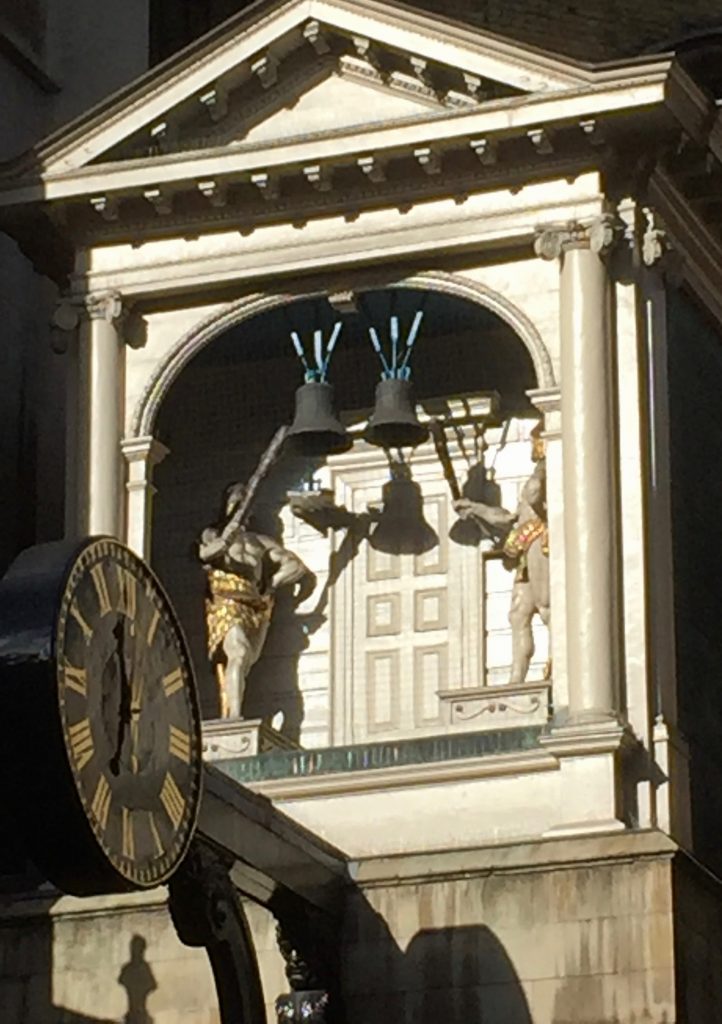
It dates from 1671, and was the first public clock in London to have a minute hand. The figures of the two giants strike the hours and quarters, and turn their heads.
The double headed eagle is the emblem of the Hoare family and their bank’s premises are at the Sign of the Golden Bottle – a practice dating from the time before buildings were allocated street numbers …
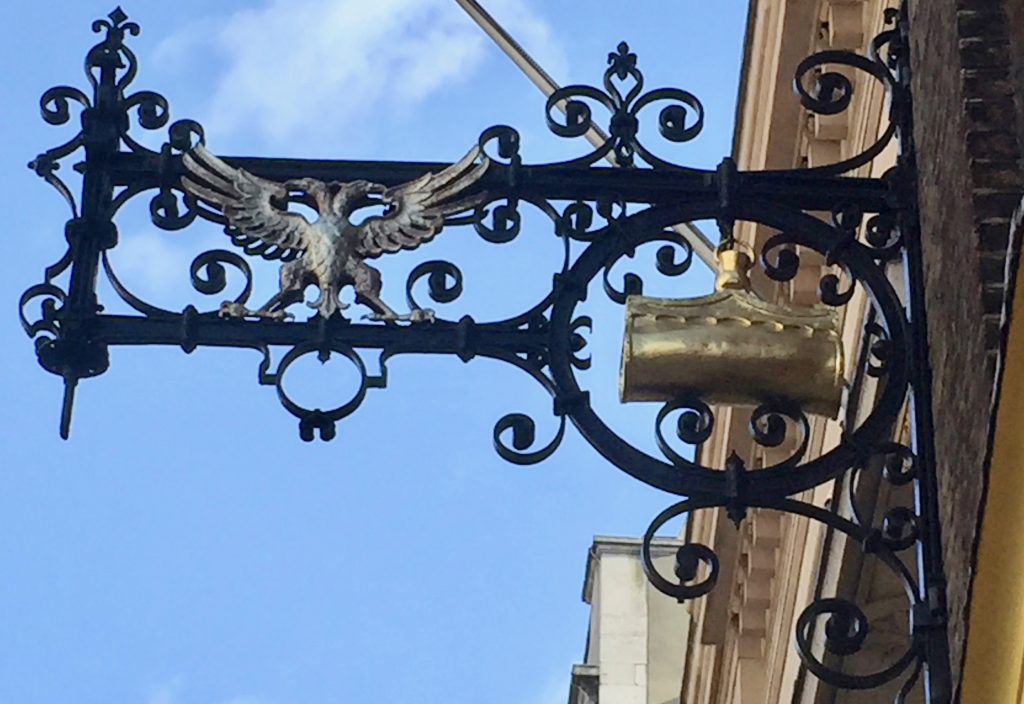
The London firm was started in 1672 by Richard Hoare and tended to the affairs of many famous literary folk including the diarist Samuel Pepys, poet Lord Byron and novelist Jane Austen.
What about these three squirrels busy chomping on nuts …
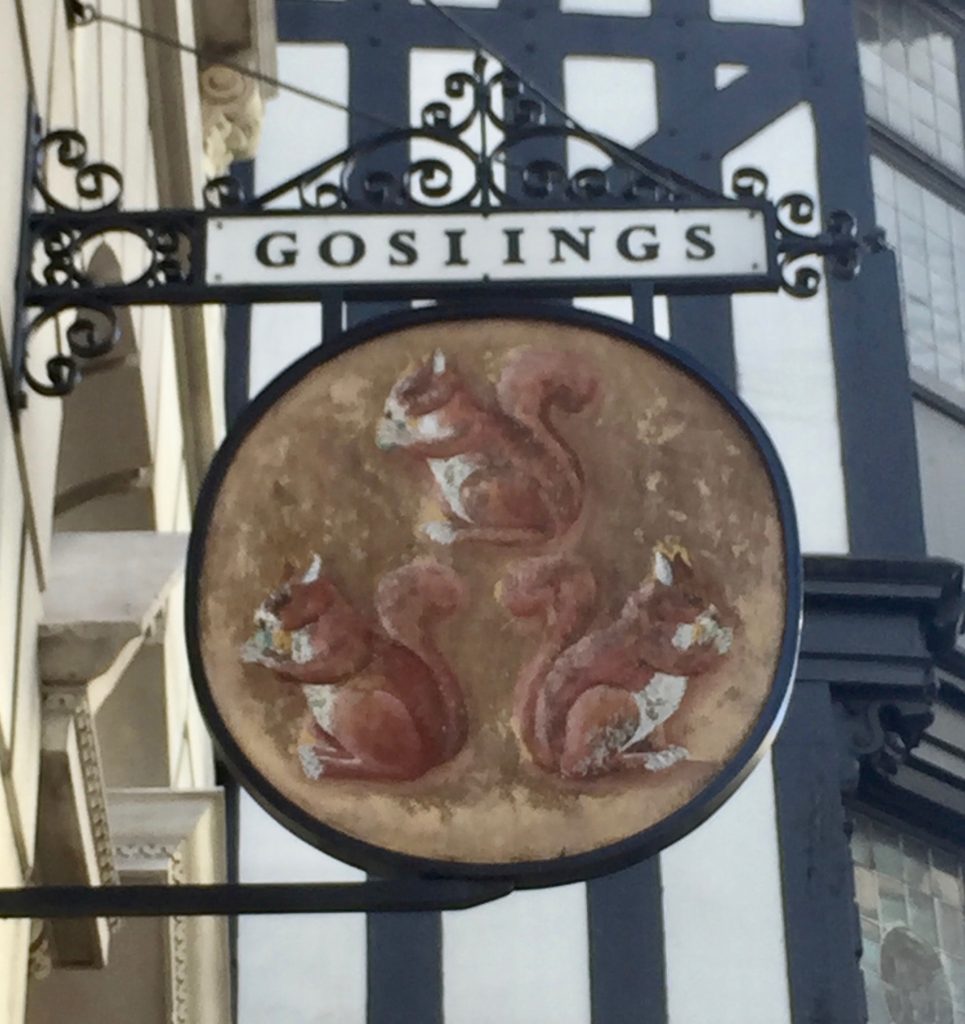
Gosling’s, originally a goldsmiths and later a bank, started trading at the Sign of the Three Squirrels around 1650. It was the fourth largest of the banks that joined together in 1896 to establish Barclay and Co Ltd as a joint stock bank. Today, Goslings remains the oldest branch in the Barclays Group and still occupies its original site in the City.
The adjacent Inns of Court were once so important to Lloyd’s Bank that they had a dedicated branch (with a pretty beehive emblem suggesting hard work and prudence) …
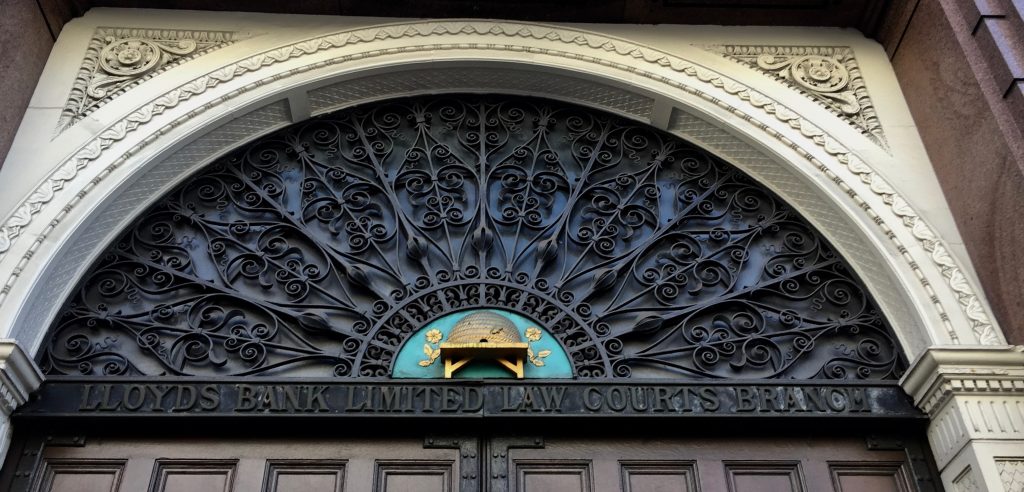
Looking skywards, you can observe these muscular chaps supporting the building’s upper stories…
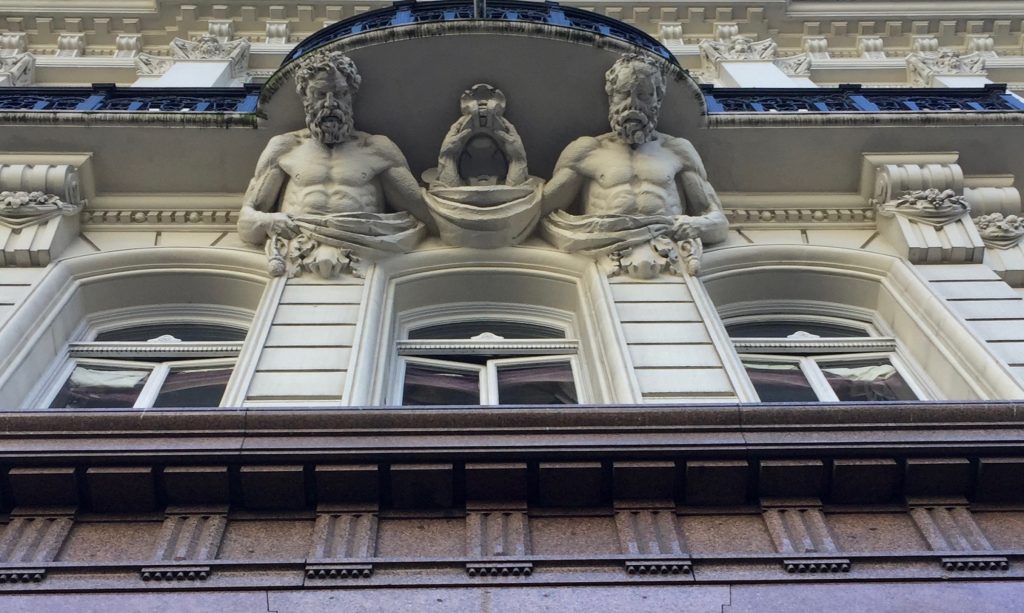
And finally, at number 50 …
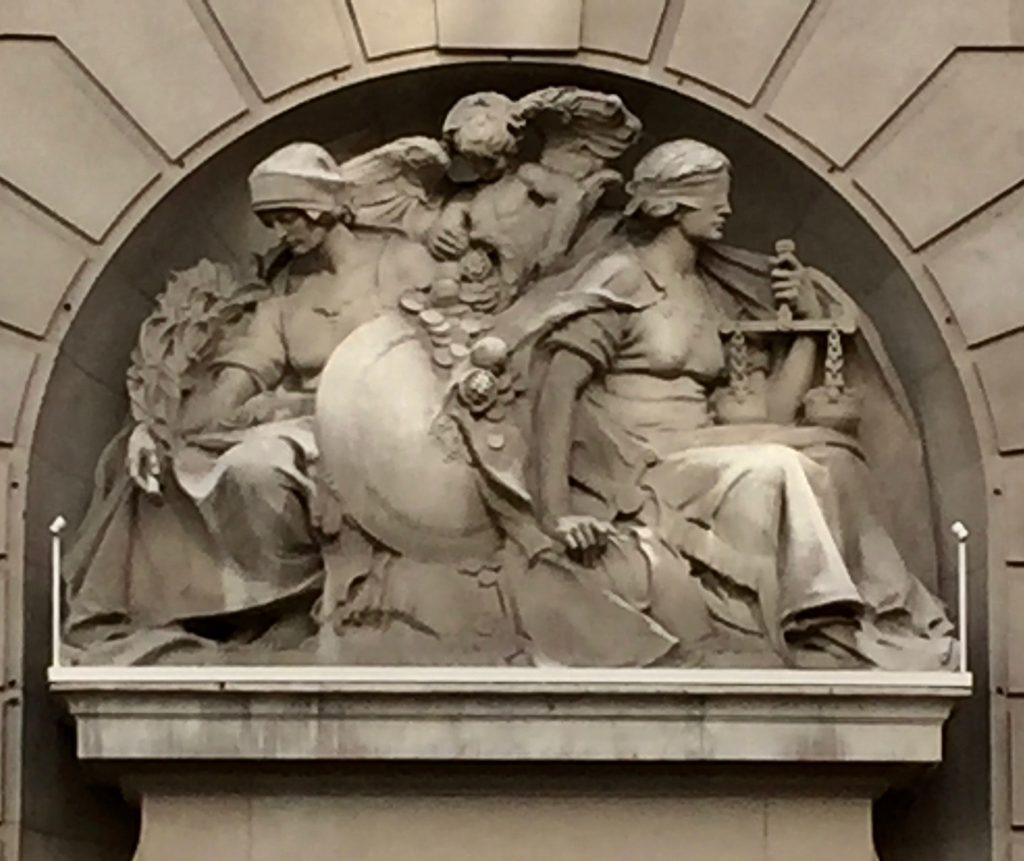
Sculpted by A. Stanley Young in 1913, the building housed both the Norwich Union Insurance Company and the lawyers of Serjeant’s Inn. On the left, the Insurance side, Lady Prudence holds a little hoard of fruit and a leafy branch whilst the cherubic figure of Liberality or Plenty spills his cornucopia of coins and fruit. On the right, the lawyers’ side, blindfolded Lady Justice rests against her shield and sword grasping the scales of justice in her left hand.
There are many versions of Lady Justice in the City and I have written about them here.
You can find earlier blogs about Fleet Street here Fleet Street Ghosts and here Fleet Street Legends.
Remember you can follow me on Instagram :

